To quote Rose from Titanic: “It’s been 84 years…”
Hi, sorry. Welcome to blogging. Sometimes you’re consistent, and sometimes life puts you on three new medications while your body tries to hospitalize you (in its defense, it was going through a lot at the time). I’ve also been playing so much Expedition 33. More on that another day.
Anyways, I’m not promising to be an especially regular presence here for at least another month or two, but I don’t want too much time to past without a new blog, and I meant to share this particular entry several months ago, so this is as good a time as any.
What you’re about to read (or, probably more realistically, skim) is the comprehensive list of all my favorite media in 2024. Over on Facebook, I make several individual posts for each of the upcoming categories at the end of each year (basically the only reason I keep Facebook around anymore), but lucky you, I am just going to Franken-burger them all together into one profane creation for my Substack-only readers. It’s a gesture of love and practicality. Trust me, you don’t want my next twelve updates to be rehashes of the same thing. That’s reserved for those peasants over on Facebook. (I’m allowed to say that. I’m one of the peasants.)
Anyways, in case you’re not champing at the bit to read like 15,000 words of disjointed musings, here’s a quick reference guide so you know roughly how far into this article you’ll need to go for any particular subject (as far as I can tell, there’s no way to link them here to fast-forward you to those sections. Sorry):
Video Games
Comics
Movies
Music
Podcasts
Animation
Fiction books
Tabletop Games
Miscellaneous
YouTube
Non-fiction books
As always, thanks for reading.
VIDEO GAMES 2024
Once again, we commence my favorite time of the year: that great, sprawling retrospective wherein I look back on all the media and related experiences to recount what stood out amongst the rabble. To unearth which creative expressions struck at the core of me, challenged the way I thought about something, or generally filled my hours with delight.
Let's begin where we usually do.
Video games in 2024 was, for the first time, one of the easiest lists for me to compile. As far as my experience was concerned, we had a palette of clearly-deserving winners, with a smattering of obvious honorable mentions. At the end of the day, the whole affair was completely stress-free and bloodless.
Is what I would have said up until the beginning of November.
Since then, I have played a small handful of highly anticipated heavyweights, which threw my neatly organized list into turmoil. The entire top 3 entered a state of pandemonium. My beloved gold, silver, and bronze medals were hurled into a tempest, and even now, sitting before the page to write this, I’m not sure where they will fall.
That said, I will hold myself back a bit. In 2023, a year lousy with so many premium game releases that it was agonizing to even consider ranking them, my video game list was liberal in how I dispensed medals for this category, including two silver medalists and three gold medalists. And while I could absolutely do that again, since I make the rules, I don’t think that’ll be necessary. That said, I will preface everything with the caveat that I did not address a lot of MAJOR 2024 games that deserve honorable mentions, mostly because it would have made the list too long, and I either didn’t want to talk about them, or because I liked them but they weren’t really my cup of tea (*cough* FFVII Rebirth).
I hope that in reading this, you find something new to play.
HONORABLE MENTION: MINISHOOT' ADVENTURES
Despite having the most generic title for anything since 1994 (complete with an entirely arbitrary apostrophe that the developers **INSIST** is essential to the name), Minishoot’ Adventures is one of the most delightful gaming experiences I had all year, and was an early runner for the awards. It’s a delightful dopamine circuit that takes the best parts of classic Zelda titles and mixes them with twin-stick shooter gameplay. The brain chemicals are real with this one, y’all. Once I started, I basically didn’t think about anything else until I was done, and I’ve thought about jumping back in regularly, despite not being the type to replay games often.
It is held back from true award status by its utter lack of story and a handful of amateurish crashes, but dang, if only more studio debuts were this inspired.
HONORABLE MENTION: WITCHHAND
It’s a rare day that I find an entirely new genre I’ve never heard of before, but Witchhand is it. It’s basically a resource management townbuilder, but if every asset was a card, all wrapped up in a stylized, witchy cartoon aesthetic. So it’s like a deckbuilder combined with a city sim.
This is a good onboarding game to prepare for heavier economy simulators. The biggest downside of Witchhand is that once I knew its cadence and what it expected of me to beat it, I felt no need to play through it again, despite a promise of other character options that would have slightly changed my approach. It’s a pretty easy experience once you internalize the concept.
HONORABLE MENTION: GLYPHICA (demo)
Short and simple point here: this is a typing-centric tower defense roguelike (get used to seeing that last word). Basically: your words are your weapons. The faster and more accurate your typing is, the more powerful you become and the longer you can defend your base. As you defend between each round, you earn money that you can spend on various upgrades to better fortify your defenses. The typical roguelike loop.
The premise is quaint, perfect, and lends to a neat 10-20 minute session if you want just a little burst of fun before you’re on your way. Can’t wait for the full release.
HONORABLE MENTION: NINE SOLS
This one is slightly more high-profile than the other things mentioned so far.
As a simp for sidescrolling search-action games (read: I am taking a note from Japan, and have started moving away from classifying titles like this as a “Metroidvania” as that term is outdated and never quite made sense), and the return of controversial studio Red Candle (double read: controversial bc China’s prime minister banned their last game, as they likened him to a teddy bear, which he greatly disliked. You know, like an emotionally-secure person) meant I had my eye on this one for a while.
Don’t let the crisp “Taopunk,” sci-fi aesthetic fool you: this game is brutal in both tone and how it presents to the player. Taking notes from Sekiro: Shadows Die Twice, you’d better become really comfortable with countering and getting punished when you fail to time those counters correctly. I wasn’t as high on this game as some others were, but I did enjoy it, especially for its world, which isn’t quite like anything I’ve seen in anything else. I would really like a novella set in this universe, just so I can see how a writer would go about translating its setpieces into prose.
HONORABLE MENTION: THE BEGINNER'S GUIDE
The all-time favorite game of Jacob Geller, one of my favorite video essayists and once-appointed “smartest cinnamon roll on the internet,” The Beginner’s Guide is a 2-3 hour highly-authored meta experience that explores game design through the lens of a narrator who is sharing his best friends’ amateur game design efforts, post-mortem. This is a simple “walking simulator,” guided entirely by the narrator, and honestly functions more like a movie than anything else, but the two-pronged story of Koda’s game design maturity and the brambled relationship he had with the narrator, and the unusual synergy that spawns out of that, had me making all sorts of quirked expressions through the short runtime of this game about games.
Is it any wonder it was made by the same person who created The Stanley Parable?
HONORABLE MENTION: RED DEAD REDEMPTION II
I’m gonna get in trouble with this one.
Red Dead Redemption II is, by the account of many, many people, one of the best games of all time, and has been regarded as such for the better part of a decade. And make no mistake, it was great, most of the time, and I liked most things about it. You will find very few games in this industry as carefully-considered and spit-polished as RDR2. From settings so realized that I could almost taste the dirt on the swinging saloon doors, to a narrative that makes you shake a little with a nebulous longing, and some of the smartest, most well-written characters you could hope for in a story. Even the one-off side characters were memorable.
So why isn’t it higher on my list? I don’t know, really. Mostly vibes and my own disposition. I’ve never been especially enthusiastic of the Wild West as a setting, even if I recognize RDR2 is a really good one of those. I also don’t much care for vast, open-world third-person games most of the time. There’s a slow deliberation in a lot of the actions that I found myself appreciating half the time for its value in forcing me to breathe, but definitely also grated at other times when I wanted to hurry things along and saw no value in slowing it down.
It was good. Great. Incredible, even. But also, not particularly in my palette.
HONORABLE MENTION: BALATRO
The roguelike deckbuilder subgenre has been a favorite of mine for years. The same seems to be true for everyone else as well, because it’s a slice of the gaming landscape that has become profoundly oversaturated. The chemical reactions that can occur between those two independent genres when they are combined is such an organic, intuitive product that game designers can’t seem to help but throw their hat in the ring.
Balatro is this year’s meteoric dark horse indie title. Nobody knew what this game was going into 2024. I’m not sure if it’d even been announced. Then it took the world by storm, and currently has an overwhelmingly positive score on Steam, with over 50,000 reviews. That is **bonkers**.
And yet, I couldn’t get into it for months.
Balatro is the game of poker, if poker was designed by someone who hated poker (which is all literally true, the designer said so himself). The objective is simple: score as many points as possible each round, with 24 rounds of escalating score thresholds that must be met. As you play, you earn money to use in the in-game market, which you use to buy cards that don’t exist in a standard 52 card deck, and that is where things start to get interesting. Jokers, especially, allow you to overhaul the concept of poker so immensely that the only thing keeping it looking anything like poker in the end are the classic poker hands, which are your only means of scoring points (your full houses, straights, flushes, etc.).
A game of Balatro can look insane by the time you’re done. With a deck where you’ve eliminated all of your spades, your Ace cards earn triple points, you have twelve different King of Hearts, and whenever you play a Heart flush, a single hand can score in the hundreds of thousands (or even millions or higher). The game is about inventing chemical reactions between the chaos the jokers introduce. When you have a good build, the momentum is intoxicating.
It’s beautiful and wacky and brilliant, and it took me way too long to come around on this phenomenon of game design. The only thing holding it back is…I’m not completely sure. This was nominated for Game of the Year, is one of the most inventive things I played in 2024, and has seen me sink a ton of hours into it. Yet, I cannot bring myself to put it higher than an honorable mention. I still have not divined the reason for this.
HONORABLE MENTION: DICEFOLK
This is painful, because this is one of the aforementioned shoe-in’s for an award that was demoted to an honorable mention just before the finish line.
This is a roguelike dicebuilder. Oh. Does that sound really similar to what I was just talking about with Balatro? It is. But also, not even slightly. Welcome to the unique hell of video game subgenres. Because it’s not a deckbuilder, but a dicebuilder, where you literally modify the dice you use to play as the game progresses. But also, it’s a turn-based monster tamer, so it’s a little like Pokemon, except for the literally dozens of different ways it’s not like Pokemon at all!
Hope you followed that. :)
For real, this is low-key one of the best games to come out this year, and swallowed my mind for a month. Each run of this game has you starting with a different set of monsters as you explore four regions, swapping out monsters, upgrading them, and changing the dice that you use to activate their abilities. The dice mechanic is by far the most novel aspect of the game, and executed in a way I’ve never quite seen before, most notably in that you as the player have total control over when your opponent uses their dice.
That’s right, you are playing for both yourself AND your enemy. There is no AI. You are effectively playing against yourself. Since I suspect few people have played a game like this before, it’s hard to explain how appealing and smart this game design decision is, so you’ll just have to trust me on this one. There’s nothing quite like getting an incredible roll of three dice for your opponent and needing to figure out the best order to play them against your own dice to minimize damage to yourself. It puts you in a position where you know because of the dice that were rolled that one of your monsters is about to get rocked, but you have a measure of control in how and when that happens. It’s a robust action economy that I hope more games adopt in the future.
HONORABLE MENTION: HADES II (early access)
Y’all, I’m dying here. This was also an award winner until like, three weeks ago. Ugh.
Hades II is spectacular, and it’s not even technically released yet.
This sequel to one of the greatest indie games of all time has managed to somehow surpass its predecessor, refining and improving on nearly everything the first game brought to the table (except that one stupid weapon with the twin fire sticks. I don’t care enough to look up the name, but oof, that one needs some work).
In the end, I’m more comfortable putting this amongst the Honorable Mentions than I was with Dicefolk, because though Hades II is a better, more complete game than most fully released titles, you can tell that it’s not actually done yet. I hit the wall when it was originally released, and felt the absence of a few things that they clearly weren’t done designing yet. These are not flaws, but the nature of Early Access gaming. I will 100% revisit Hades II and pick up where I left off once it hits full release.
If you liked the original, you absolutely need to give this one a try.
BRONZE MEDAL: PRINCE OF PERSIA: THE LOST CROWN
Do not sleep on this game, for any reason. I almost did, because I don’t care about Prince of Persia as a franchise and have no loyalty to its world. I’m glad I overcame that arbitrary inhibition, because this standalone title is worth your time.
The Lost Crown is another side-scrolling search-action title like Nine Sols, but with a completely different feeling, art style, and setting. Combat is more fluid here, with a greater emphasis on utility of movement, action opportunities, and cinematic flourish. There is rarely a time during The Lost Crown when I didn’t feel like a badass. But as a member of a group full of badasses, fighting against a bunch of badass monsters, I rarely felt like I was so powerful that it rendered the challenges as trivial. Boss fights were riveting, the power-ups I was awarded for exploration were satisfying, and most of the puzzles were perfectly balanced in terms of difficulty.
It doesn’t really matter what the game is about. There’s a plot, and the characters are cool, but the appeal of the game isn’t really about them. They are a vehicle by which to introduce new setpieces, gameplay ideas, and hype boss encounters.
The worst part of this game is it is owned by Ubisoft, who at this point seem to be competing with EA over the title of who can fuck up the most good things, and they don’t look interested in breaking stride. It was recently announced that, despite resoundingly positive criticism from critics and players, the team behind The Lost Crown was disbanded, and the sequel cancelled. A sequel wasn’t really necessary, as this is a complete experience unto itself, but still. Damn.
SILVER MEDAL: INSOMNIA'S SPIDER-MAN 2
I was really not expecting Spider-Man 2 to take an award this year. On the one hand, it does very little that is especially new or innovative, and is the third iteration of a now very familiar formula for a Spider-Man game. Insomnia struck gold once in 2019 and has continued to mine that ore ever since. Which is great, but it’s still just gold, when they really needed to find some diamond.
My point is this: Spider-Man 2 is phenomenal, if uninventive. This is definitely the best storytelling of any of Insomnia’s Spider-Man outings so far—evoking the most powerful emotions I’ve felt from any Spider-Man game—and is the most fine-tuned and polished of their superhero experiences. All of that is why it’s earning a Silver Medal. But it still just feels like a better version of more of the same.
The web slinging is like…I genuinely don’t know how you could possibly improve on this. It’s my favorite mode of transportation in any video game, ever. Between the locomotive options and the absolute personality bursting from within New York City, Insomnia has made this game just a delight to move through. You don’t even need to do anything else. Simply navigating the city is enough fun to last you for hours. There’s a uniquely surreal and wondrous feeling when you land on a street branching off from Times’ Square and you see a restaurant and think “wait…I’m pretty sure I’ve eaten here in real life before.” It’s so magnificently realized that it’s hard to capture in words.
The combat is also a blast, if just an evolution of what we’ve done before. Having Kraven as a central antagonist worked out way better than I’d anticipated when they first announced him as the bad guy. He really feels like he created a level of stakes that were absent from previous games.
The cinematic flair of the main story missions is especially well-conceived, with theatrical camera movements, action sequences, and emotional beats that draw the most out of every scene. There is no shortage of hype or consequence. In this, Spider-Man 2 is a master class.
Which is ultimately what this boils down to: Spider-Man 2 is the best at everything it does, and if this was my first time experiencing its formula, this would be a hard and fast gold medalist. As it stands, it just feels like a gold-medal Olympian performing a slightly different, slightly improved version of what they did to win last time, without changing up the routine in any meaningful way.
For that, it instead gets a silver.
GOLD MEDAL: ASTROBOT (and ASTRO'S PLAYROOM)
Back when the PS5 launched, it came with a tech demo installed on the hardware called Astro’s Playroom, wherein you played as a cute little robot buddy in a third-person action platformer reminiscent of classic PS1-era titles, as you sought to explore the inner world of the Playstation 5 as a console. The hardware of the system was elaborated upon to create the levels, so the entire game unfolded, teaching you about the power and construction of the console, while also challenging you with simple, but quirky gameplay worlds. All told, it took maybe 2 hours to beat this tech demo.
Four years later, and half a decade of people begging for more, the same team took their little robot buddy to the next level. And thus we received the glory of Astrobot.
The Playstation has always lacked for one very distinct thing: a mascot. Xbox has Master Chief, and of course, Nintendo has a heroes gallery of iconic protagonists, of which Mario sits at the head of the table. With the release of Astrobot, it really feels like he’s been positioned to fill that mascot-shaped void, and I am ALL for it.
This is the most raw joy I’ve felt playing a video game in…a decade? For whatever shortcomings you may perceive, there is no argument to be made against the sheer magnitude of this game’s vibes. From every minute sound design detail to the ever-exciting music (this soundtrack is **incredible**), and the variety of game mechanics, the minute-to-minute pleasure of the experience leaves nothing to be desired.
Astrobot feels at once like a celebration of five generations of gaming history (the majority of the game involves finding other robots of your crew, many of whom are themed after other Playstation properties), and yet, the perfect jumping off point for new gamers. If I had a child who was of the age to understand and participate in gaming, I would start them with Astrobot, and watch as jubilance bloomed within them.
I would most like to see the studio evolve Astrobot further, crystallizing his own lore and identity into something that stands on its own. The ode to Playstation characters was a wonderful and welcome idea this time around. I’m not convinced it will be as novel next time.
Astrobot hit the ground running. I would like to see him learn to fly, and really become deserving of the mantle as Playstation’s new mascot.
EVERYTHING I PLAYED THIS YEAR:
Lies of P
Gravity Circuit
Aliens: Dark Descent (watched)
Slay the Princess
Dead Cells
Gone Home
Wasteland 3
Prince of Persia: The Lost Crown
Xenoblade Chronicles 3 (watched)
Silent Hill: The Short Message (watched)
Portal Revolutions
Balatro
Mega Man Legends 2 (revisited, rewatched)
Final Fantasy VII Rebirth (watched)
Dicefolk
Spiritfall
Tales of Kenzara: Zau
Hades II
Red Dead Redemption II (watched)
Nine Sols
Minishoot’ Adventures
Still Wakes the Deep (watched)
Into the Breach
Spyro Reignited: Ripto’s Rage
Glyphica
Ultimate Chicken Horse
WitchHand
Tactical Breach Wizards
The Beginner’s Guide
Dorf Romantik
Bloomtown
Astro’s Playroom
Astrobot
Deadspace (Remake)
Spider-Man 2
Comics 2024
Let’s talk comics. Among my many intentions for 2024, one of them was that I would dedicate more energy towards exploring the mostly foreign medium of Western comics. I technically succeeded, though not to the degree I intended when I set out.
No honorable mentions this year, only our award winners, though I do want to add two very small notes before continuing. “Scurry” is delightfully written and illustrated comic about a pack of rats as they survive in a world without people, but couldn’t hold me for whatever reason, and Kagurabachi, one of the hot shonen manga right now. I see the potential, but after about 30 chapters, it wasn’t holding my attention. I’ll possibly revisit it once it’s inevitably animated.
On to the medalists.
BRONZE MEDAL: "GACHIAKUTA"
In the interest of transparency, I didn’t exactly discover Gachiakuta this year. I found it on a whim 2-3 years ago, read up to its at-the-time 20 chapters, and stuck it in my back pocket to revisit once there was more meat on its promising bones.
I think this manga is great, while simultaneously proving difficult to truly love. The decay of its trash-centric underworld is marvelous, and injected with just the right tropes to distinguish its tone and identity amongst its contemporaries and the giants of the genre that came before it.
The action illustrations and choreography are the central draw of the series, particularly the girl who fights using a giant pair of scissors, wielded with her feet. This is far more interesting than it might first sound on the surface. It’s not as simple as having blades on her legs—that has been done. The fact that it’s a thing detached from her body allows a depth of maneuverability options that allows her to absorb every scene she’s in until it’s all about her.
The main character has a cool, thematically-appropriate power, with a lot of potential for a big pay off, but at this point, we haven’t quite explored as much of his story as I’d expected, and as such he’s felt a bit more lackluster than the rest of the cast. The majority of arcs so far have felt like an important sidequest, something ultimately relevant and building towards something, but missing a lot of cornerstone moments that we can really sink our teeth into.
I’m going to keep up with Gachiakuta because I think it’s doing more than most of the genre right now, and I think it stands to gain from the momentum of a long-running story, but until then, it won’t surpass an accolade greater than the bronze medal.
SILVER MEDAL: "SOMETHING IS KILLING THE CHILDREN"
Something is Killing the Children has one of the most immediately intriguing titles I’ve heard in a while, and is a series of comic books I’ve passed by in bookstores for years. In 2024, I decided to finally give it an honest-to-god chance, and it did not disappoint.
I have not yet found any other Western comic book that has held my attention quite like this. I could praise it for its illustrations, which are superb, or its plotting, which delightfully corkscrewed around my expectations more than once. I could praise SiKtC for its crunchy themes, dark tone, clever use of paneling to communicate feelings, and general audacity. But what it deserves more than any of that is praise for dialogue.
Erika and the rest of the SiKtC cast have a flow of dialogue that treads the razor wire of feeling both realistic, yet idealized. The use of pauses and silence is especially noteworthy, and dresses character personalities in noticeably different ways. When characters speak, and when they choose not to speak, you always feel the weight, even before registering what they are saying. This is a quality of SiKtC that only grows the further you dive into its shadows, rimmed with eyes of red.
My highest praise is I wish there was more.
GOLD MEDAL: "VINLAND SAGA"
If only everything could move me the way Vinland Saga has.
Earlier this year, I read Vinland Saga, one of the most prodigious historical fictions of the manga landscape. It is a story that has stalked the periphery of my attention for years, along others like Vagabond and Basilisk. Having now drank from its fount, I realize the error of having waited for so long.
Vinland Saga is a story of many things. I wrote about some of those things in a blog earlier this year, wherein I was more patient with my words and in the full enrapturement of its highs. While that high has faded, there is no doubt this manga deserves my gold for the year. I think about it, and the journey of Thorfinn, almost daily. As I outlined in my earlier writing, it is the home of my new favorite redemption arc, surpassing all others, including ATLA’s Zuko.
A story so sweeping in its epic stakes, yet so grounded in the glaring flaws of personal reality, is a rare find. The richly realized setting of 11th century England and Denmark is a place so painstakingly captured that it leaves nothing to the imagination. You see its glories, its shortcomings, its ruin—all of the love, and just as much of the pain.
Vinland Saga reminds me of something I already knew: there is nothing more beautiful, nor more cathartic than forgiveness.
EVERYTHING I READ IN 2024:
Kagurabachi
Vinland Saga
Radiant Black
Something is Killing the Children
Scurry
Gachiakuta
MOVIES 2024
I didn’t feel like I’d watched many movies this year until I started putting this list together. It’s more than I believed, and a pretty strong line-up to boot. 2024 didn’t bless me with a new favorite film ever, but I definitely caught myself enjoying a high ratio of what I watched, so no complaints overall.
That said, I expect that my list will look different from a lot of other people’s lists, especially with the films that were actually released this year. There were multiple blockbusters that others have very high opinions on, which I’m not going to address at all (i.e. Furiosa, Dune Part II). I’m glad people enjoyed those films more than me, and they definitely had their merits, but they just weren’t my bag.
HONORABLE MENTION: DEADPOOL & WOLVERINE
I am pretty over the recent trend of multiverses appearing in a bunch of different media. Those narratives can be extremely intriguing, but with the glut of them over the last 3-5 years, the energy has been spent and we need a break (the lone exception is the eventual release of Beyond the Spider-Verse).
D&P occupied that same space, which is unfortunate, but leveraged their intellectual property jokes in such a way that I can mostly forgive it. This movie was incredible in a lot of ways. There are two action sequences I think about at least once a week, and a few jokes that really held up, even against my initially skeptical expectations (despite minimal screentime, Chris Evans f***ing slayed in this film, and has like 3 of the top 5 gags). Was this film a bit masturbatory in its inclusion of multiple high-profile superhero rejects and fanservice characters? Yes. Did I include the word masturbatory just because it’s on brand for Deadpool and I know he’d appreciate it? Also yes.
HONORABLE MENTION: SMILE 2
This sequel did not need to be this good. The original horror movie, Smile, was a serviceable, if not remarkable accomplishment, drawing on a similar premise and tone as genre hit It Follows (my friend Daniel once referred to this burgeoning horror subgenre as “Trauma Pathogens”), in which you are tormented by a smiling, supernatural entity if you witness a suicide by one of its hosts, as it functions much like a parasite. The witness then becomes the new “infected,” haunted and plagued by this creature, until they, too, inevitably succumb, unless they kill someone else in the presence of a witness and pass it along to that person.
Smile 2 takes this idea to several new horrifying extremes, and around the halfway mark, I knew exactly how it was going to end. This did not ruin the experience, but instead made me only more apprehensive as the inevitable conclusion came to pass. A surprisingly good offering to the modern horror landscape, the only downside of which is I have no idea how you’d make a third installment without taking several steps backward.
HONORABLE MENTION: GUARDIANS OF THE GALAXY VOL. 3
As someone who used to deeply enjoy the MCU, and has in recent years found myself disenfranchised by their scrambling efforts to salvage the uncoordinated trainwreck of everything that happened after No Way Home, I was pleasantly surprised by Guardians of the Galaxy 3. It did not quite hit the highs of its predecessors, nor did it end how I wanted it to, but the emphasis on the story of Rocket Racoon did feel like the right anchor to make me give a shit about this, even for a minute.
And the Rocket scenes are undoubtedly the most powerful, influential parts of the movie, to the point that I’m not sure they would have ever made a third installment if they didn’t find the film’s identity rooted in his character and the deeply troubling (but also, bittersweet) backstory that has chased him all his life.
HONORABLE MENTION: RRR
It took me two years too many to behold this glorious testament to human creativity.
If you haven’t seen it, or heard of it, RRR is a Tollywood absurd action-comedy-drama-romance. It’s three hours long, it gets to be multiple genres. Explaining what RRR is *about* is meaningless. More important is what happens:
In what can only be described as a delirious fever-dream, I’m pretty sure I watched a man dual-wield motorcycles like a couple of swords, which was somehow right at home amongst the suplexing tigers, unexpectedly hype dance-offs, ambushing a palace with a runaway truck filled with dozens of caged animals, 1v100 displays of ridiculous combat showdowns, and two men on piggyback destroying an entire prison.
All while having a genuine emotional core.
Insane and superb. But be mindful of the violence. When it’s not hilariously absurd, it’s jarringly intense.
BRONZE MEDAL: POOR THINGS
This year’s winner for the movie that I can only recommend to very specific people and nobody else.
This reimagining of the tale of Frankenstein is Emma Stone at her best. Starting the film with the mind of an infant, we watch as Bella learns about the world and herself at a rate of intellectual growth impossible to others, mentally evolving from a child into a sophisticated adult over the course of…a year or so? The timeline isn’t super clear, but we know it’s fast.
Does that already feel like a weird, potentially socially complicated premise? Because it’s both weirder and more socially complicated than you think it will be. From watching man-made-monster William DeFoe burping up bubbles at dinner time, to Mark Ruffalo having the funniest mental breakdown in recent history (an inherently un-funny thing that makes sense in the movie), to the goopy, surreal CG animated sky and its flying trains, to the steampunk world full of mutant monsters, to all the bangin’.
Oh, right. This movie has so much sex. Sex of a magnitude I never would have expected before watching it. An amount of sex that, despite everything else I mentioned that this movie also includes in the previous paragraph, feels like one of the central points of the film. In fact, I could see one making the argument that Bella’s sexual awakening and maturity over the course of the film is its greatest plotline, though I’m not sure I agree with that, especially in the latter half. It certainly is a major tenant of her character development, but ultimately feels more like a stepping stone towards her broader understanding of herself and the world. This transformation is profound and why the film is earning a medal from me. That said, I cannot emphasize this enough: if you don’t care for coitus in your movies, then none of the other qualities Poor Things brings to the table is likely to make up for the prominence of this characteristic. Poor Things is many things besides that. But it is also a lot of that.
Poor Things is a film that I meant to watch again at some point this year, but hadn’t found the opportunity. It is deeply imaginative, and peculiar in how it frames the experiences of people. It is funny, endearing, and side-winding. By the time you reach the end, you feel as though you’ve partaken in a full and complete journey, in which Bella came out the other side a wholly different entity from which she began.
SILVER MEDAL: THE SUBSTANCE
By far my favorite horror film of the year, and I don’t think there was a single jump-scare to be found. (There are some mild spoilers in this review, though not for anything beyond the first 15-20 minutes).
The Substance tells the tale of a middle-aged former fitness model as her once-huge-now-floundering workout show gets unceremoniously axed from the network, her fading youth as the centermost reason for failing viewership. In the ensuing despair, desperation takes root. She catches an advertisement for a (very) seedy, (very) experimental new product that’s just hitting the market. A drug known only as The Substance, which promises to return one’s youth to you.
And boy, does it.
What follows is a rollercoaster: she of course gets said substance, which upon ingestion, uh, creates a younger version of her, out of the shell of her older body, like a butterfly emerging from a cocoon. That’s weird, yes, but more than that: her consciousness can only exist in one version of herself at a time. And she cannot stay in the younger body forever. She must occasionally return to the older body, for reasons that are better left for the film to explain.
Naturally, now young and hot again, she enters an intoxicating relationship with the social power the substance gives her and starts to abuse it far beyond the bounds of its recommended limits (of which she is constantly reminded by the people who made the drug). It’s an interesting, if not especially inspired concept.
But then it keeps going.
And going.
And going long after the point where you are screaming that she needs to stop, Jesus Christ please stop, oh my god what are you doing, this is a nightmare this is a nightmare. You want to throw up. Not because of gore or violence or grotesque horror ooze, but because of the sheer stress of witnessing a person make the most profoundly wrong choice available, over and over, and knowing you’re powerless to stop it.
And then you realize the impossible. You stare in disbelief at the line on the bottom of the screen, telling you you’re only halfway through the film. How can that be? How can this situation descend further? How could it possibly get any worse?
You fool.
It’s only just begun.
GOLD MEDAL: PAST LIVES
I’ve thought about the end of this movie at least once almost every day since I’ve seen it.
Past Lives will dissect you like a live frog on an operating table—pull out your heart, and watch as it slows, one beat after the next, through the slow, wilting decrescendo into oblivion.
It is a movie that interrogates a specific genre of sadness: that love that never was and cannot be. This is, of course, not a novel idea for a plot, even if written with a level of finesse rarely dreamed of by others who attempt it. What has allowed Past Lives to leave an impression not only on myself, but the many who have seen it, is the maturity and complexity of the situation it incubates its characters in. There are no cheap emotions or ideas. What’s more, it’s not interested in taking the easy way out.
It’s hard to explain the careful, gingerly-laid bricks that make the conflict of this film so believable, or the completeness of the *many* understandable contradictions of its characters, alive, and breathing, and realer than the word “character” implies. There is absolutely no way the emotional core of this film isn’t rooted in some level of the anecdotal.
You will spend the entire film wondering how it could ever hope to resolve in a way where everyone is happy.
But “happy” is not the right word. Nor is it the wrong word. Reality is more complicated than a binary of happiness versus sadness—of the fulfilled versus the unfulfilled. When a relationship is complicated enough, with enough history that no conversation is only ever one conversation, words and feelings and conclusions end up as a tesseract of hopes, dreams, reality, and wanting many different things all at once, which cannot coexist.
All of which accumulates in a transcendent, nearly impossible two minutes of perfect cinematography: an unbroken shot wherein we watch two people watch each other. They say nothing, yet they navigate a full conversation that, perhaps unbelievably, you can hear if you listen closely enough. Listen with the heart it has pulled out of you, like that frog on the table.
Then the scene ends and you just.
Dissolve.
EVERYTHING I WATCHED THIS YEAR
M3GAN
Godzilla: Minus One
Poor Things
Mad Max
Iron Claw
Dune Part 1 (revisit)
Dune Part 2
Mad Max Fury Road
Cloverfield (revisit)
10 Cloverfield Lane
The Banshees of Inisherin
Challengers
Little Shop of Horrors
Alien
Aliens
Alien Romulus
Furiosa
Past Lives
Deadpool & Wolverine
The Marvels
Guardians of the Galaxy 3
Twisters
The Invisible Man
Smile
The Substance
Venom
Venom: Let There Be Carnage
Venom: The Last Dance
Smile 2
RRR
Longlegs
MUSIC 2024
My newly discovered Music of 2024 was all over the place in terms of its genre, expressions, sonic textures, and general vibe. Keeping in tradition, this list will not abide by the conventional system of awarding medals, but instead exist on a separate plane, where I’m free to simply talk about a smattering of those songs and artists that I came back to again and again.
I will dedicate time here to a select few out of necessity, though I could speak on many more. 2024 was generally a solid year for musical discovery. You can find it all in the Spotify list shared at the end.
Holding Absence (especially “Wilt,” and “The Angel in the Marble”)
“Now all I have left is a handful of hope and
A thousand laments that I can't leave unspoken”
I’m going to start with Holding Absence because in 2024, they graduated from one of my favorite bands of the last few years (they’ve shown up on this list previously), to one of my favorite bands, end of sentence. Rather than just taste-testing a few of their singles, this year I went through their entire discography, and my musical leanings are more enriched for it.
Holding Absence is a rock band who leans into highly-emotive post-rock flavoring. I do not know how to explain this if you don’t know what post-rock sounds like, but it’s got a sort of aggressively dreamy, cinematic quality. Not all of their music features this, but all the best ones do. The rest of their music is a polished, punchy flavor of rock that is, admittedly, not especially subversive or inventive. Instead, they are masters of their discipline, crafting songs that are cocktails of youthful angst and larger-than-life instrumentalism. They are a group of sadbois. My people.
I almost spent this entire section gushing about a dozen different songs that I’ve had on repeat for the last year, but instead I want to focus on two: “Wilt,” and “The Angel in the Marble.” I choose these two because the latter is a sort of sequel to the former, and they are each some of the best in their library. They are Holding Absence at the top of their lyrical game, and exemplary of their overall style, motives, purpose, and drive as an artist. Each of them is divided into halves that echo one another, to the point they are nearly four different tracks, united by one story.
The magic exists in the latter halves of each song. The last two minutes of Wilt is my favorite music I heard all year. The vocals are *immaculate*. The Angel in the Marble is especially potent in that it takes the lyrics from Wilt and answers them with a different perspective. The result is an inspirational anthem that makes you hold one fist to your chest, and another toward the sky.
The Outer Wilds Covers by JSolo
I am of the opinion that everyone ought to have one or two songs that function as a “soft reset” on your brain. A part of this is simply repetition: the more you hear a song at a certain time, the more associations your brain makes with the feelings that song evokes. Eventually, the song will have a strong enough hold that the first few notes will immediately drop your blood pressure, loosen your jaw, soothe your racing mind.
In the last year, I developed a new one of these. Jsolo’s cover of the “Main Theme” from The Outer Wilds. As I write this, I’m listening to the song, and it’s proving difficult to focus, as I feel the pull of it, causing me to drift out of my Type A headspace and into relaxation.
However, I want to address more beyond the Main Theme, though it’s the centerpiece of why I chose to include this entry. The Outer Wilds is a game with an already many memorable songs, and Jsolo’s rendition of them brings out the fullest of their souls. The climactic sway of a universe in its final moments, the hope of being together, the mysteries never explored. All the things that make The Outer Wilds one of the greatest games of all time.
Listen to “Reprise - Cinematique Version” and tell me it doesn’t feel like you’re desperately holding onto the most important thing in the world, pleading with God or the universe not to take it away.
My Spotify Wrapped has Jsolo as my second most listened to artist of the year. But I’ll tell you something Spotify doesn’t know: their numbers were only accounting for September through November. The first nine months of the year I listened to this artist exclusively through YouTube, before I even thought to check if he was on Spotify. In other words: this is actually my most listened to music of the year, by orders of magnitude. I think I probably listened to these covers as much as I listened to literally everything else on Spotify put together.
Lewis Capaldi
"I'll miss knowing what you're thinking
And hearing how your day has been
Do you think you can tell me everything, darling,
But leave out every part about him?"
I might be jumping the gun a bit here, because I am still woefully short of exploring most of Lewis Capaldi’s music, but what I heard this year convinced me he would be one of my favorite new artists, even if I hadn’t done a deep dive yet.
I’ve long since resigned myself to the fact that sad music sustains me in a way that probably isn’t good for my long-term health. A wistful piano with a lone singer waxing poetic about shades of heartbreak is never not going to land with me. It’s been this way since I was like, 14 years old.
As far as I can tell, that’s most of Lewis Capaldi’s music. He laments…just about everything, but in a beautiful, occasionally pitiful color of misery. I go back and forth on how much I actually agree with some of his lyrics, but I can give him this if nothing else: he has shown no shortage of vulnerability, and that’s a virtue and quality unto itself.
I’ll probably spend a window of 2025 looking more deeply into his records.
Soundtrack to Hazbin Hotel
“When all’s said and done
There’s the question of fun
And for those of us with Divine Ordainment
Extermination is ENTERTAINMENT”
I will not belabor this entry, as I will spend much more time discussing Hazbin Hotel in 2024’s Animation category (that’s called foreshadowing), but hot damn. This shit slaps.
I exist in a weird space where I both enjoy most musicals I see, but rarely ever seek them out. Hazbin Hotel is one I sought out, and it’s been a permanent fixture of my playlists and karaoke nights ever since. “Loser, Baby,” “Stayed Gone,” “Hell is Forever,” “Ready For This,” “Hell’s Greatest Dad,” “Poison.” The number of premium earworms generated by such a short series should be studied. I don’t know how they did it, but I suspect the *absolutely stacked* Broadway casting went a long way towards that end.
“Depression” by Nathan Wagner
"Don't wanna let the light burn out
But all I see are stormy clouds
And they say it's gonna be okay
I'm trying to keep the faith"
After what I said in the Lewis Capaldi section, having a song on here called “Depression” shouldn’t surprise anybody.
However, I do like Depression more than any of the Capaldi music I’ve heard so far, and not just because I generally like Nathan Wagner more as a singer and artist.
Depression is, if you couldn’t guess, a rather despairing track. But it’s not exclusively despairing, and that’s important to why I’ve included it on the list. It is also epic, and hopeful, and cathartic, and something almost resembling victorious. Nathan Wagner is, by far, one of my favorite vocalists currently making music. His voice is a rapture of passion and emotional combat, each syllable a soldier on the frontlines of a song that expresses his innermost turmoil. I cannot stress enough how much this song is made by the voice behind the symphonic strings and slowly locomotive percussion.
At exactly the halfway point of the song (it’s 9 minutes long btw—quite the journey), the sound begins to transform into its “second act,” if you will. This section of the song I can only liken to the soundtrack from Beyond Two Souls—a wall of instrumental music that is both chaotic and mountainous.
Then it slows, retreating into its earlier, more reserved, lilting hurt. Until finally exploding in light and a marching drum, pulling heaven down to earth and crying “you’re not alone, don’t give up hope” in words that you feel more with your chest than your mind.
“RATATATA” by BABYMETAL and Electric Callboy
RATATATA is an absolutely terrible song, if your goal is to do anything but jump around and dance.
The chemical fusion of these two hype-inducing metal artists combine to create one of the most bopping pop-metal dance tracks to hit this generation of music. I just want to get up and run around whenever it comes on.
There’s nothing deeper or more intriguing here, that’s why there’s no point adding a lyric at the start of the section. It’s just the best at what it does, and an adrenaline injection straight into your neck.
Other Rock Bangers:
Just for a quick burst of several songs that didn’t necessarily warrant having their own section, but which I listened to a lot:
“The Shower Scene” by Ice Nine Kills has one of my favorite choruses of the year. The spinning of the vocals during the “ay” sounds in the hook (‘say-ay-aying goodnight’) have lived rent-free in my brain since summer. The nods to slasher-classic American Psycho also go a long way to giving this a boost of personality (like the rest of this album).
“Left Behind” by The Plot in You is a song I knew would be a favorite from the first five seconds. If I knew more about music, I could probably analyze why, but this track exists in a vein of music that always inevitably works for me. It takes a page out of mainstream edgyboi music and coats it in a pop-rock major key gloss that reminds me of anthems from the late 00’s. It’s great.
“Heavy is the Crown” by Linkin Park proves that Linkin Park is back. They are different now of course, and in my opinion, they’ve made the smart (if (ridiculously) controversial) decision to switch to a singer who is largely different from Chester Bennington, since replicating him wasn’t really in the cards. So far, Emily Armstrong has proven a promising reinvention of the vocal identity of the band (albeit with Mike Shinoda still leading the way with his iconic rap flows). Heavy is the Crown is my favorite track from the band’s re-debut, and was featured in both Arcane, as well as at the League of Legends World Championships. It hits hard in a way that is both familiar and sideways. It is Linkin Park tackling their now-legendary sound from a different angle.
“How Far I’ll Go (Moana cover)” by No Resolve. This cover of the Moana staple takes one of my all-time favorite Disney songs and makes it flex new muscles (the only downside is the band does the arbitrary thing of changing the girl references into boy references (‘daughter’ into ‘son,’ specifically) which is cringe to the utmost). Because of the drums especially, this version of the song now has a lot more head-bopping, jumping energy, and has become one of my favorite songs for biking.
Here’s a link to my Spotify Playlist for 2024
Podcasts 2024
Most years, my podcast list is short and easy. 2024 is no different, and in fact, smaller than usual. My listening library has had fewer additions, and greater subtractions. I just didn’t listen to many podcasts in 2024, across the board. However, there were three significant entries that I would like to bring attention:
MY SISTER MADE ME VIEW IT
For full transparency, I am friends with one of the two hosts of this podcast. It’s absolutely still deserving of your attention on its own merits.
My Sister Made Me View It is a show by two sisters who force each other to watch and/or read different things. This is a theme that we will return to later in this list.
For my purposes, I had one major goal: I wanted to use their podcast as an opportunity to revisit Brandon Sanderson’s The Stormlight Archive series, without actually going back and re-reading all of them myself. In this, Emily and Megan’s commentary was all I could ask for and more.
On one side, Megan, who has been so invested in these books for so many years, she’s basically a scholar. On the other side, Emily, who has never touched them, nor just about anything Brandon has ever written.
You can tell these two are sisters. The playful jabs, the enthusiastic screaming, the excitement that descends into waves of overlapping laughter is pure delight. They are both extremely funny people (Megan knows she’s funny—she mentions it a lot, and she’s right), so when they explore the dense, topsy-turvy plot, world, and characters of the Stormlight books, it’s a winning combination.
I enjoyed catching up with them so much that I had to then jump over to another series they did, where they gave commentary on almost all of the MCU films. This was perfect, because the power dynamic was almost completely reversed. Now Emily is the one with all the background information and encyclopedic knowledge, and Megan was (mostly) new to all the content.
They were fun and easy to listen to, and if you enjoy a healthy, friendly, familial dynamic that is also 80% chaos, this is good place to look.
VERSUS WOLVES
“THIS IS NOT A VILLAIN THING,” John said, like a villain.
Last year, one of my favorite podcasts, Let’s Fight A Boss, came to a close, leaving a void in my life that this year I would fill with a new venture, begun by the same person who headed LFAB.
John Walsh, Super Eyepatch Wolf, now takes up a new, somehow even more absurd undertaking. Combining forces with WoolieVersus, together these two friends are Versus Wolves, and each month they spend time shooting the breeze, telling funny stories, and critically, hashing out the details of the challenges they’d issued each other the month before.
It’s in this last point that Versus Wolves thrives. The challenges can be basically anything, as long as it’s financially reasonable. So far, they’ve been as flexible as commanding the other person to play an iconically shitty video game live for other people, to trying an all-new type of cuisine, to learning Brazilian Jiu-Jitsu. A lot of it is media related, but not always.
But that’s not the end of this aspect of the show. At the conclusion of each episode, they then force themselves to add their new experiences into an ongoing best-to-worst list known as “The Pantheon of Greatness,” wherein each new entry needs to be justified in why it’s better or worse than things they’d done before. This is how you end up with absurd conversations like “Yes, learning how to box is better than the first 26 episodes of HunterxHunter, but is it better than the concept of Mediterranean food?” The unnecessary conflict they inflict upon themselves is deeply amusing.
But of course, podcasts live and die by their chemistry, and the chemistry these two have is…certainly something. I’ve seen it described as PvPodcasting, or Competitive Podcasting, where the two, who are obviously friends, frequently manufacture a hilarious adversarial energy. It is never mean-spirited, and is inarguably the most fun part of the podcast in a way that, if I were to describe it in words, would balloon the size of this post.
I love it, and I’m glad I get to see Wolf continuing to cast. He’s become really good at it over the years.
MINNMAX
“Welcome to MinnMax: a show about games, friends, and getting better.”
The moment I internalized how the MinnMax podcast worked, I desperately wanted to try and replicate it.
MinnMax (a perfect name—”MinMax” being a gaming term for optimizing character utility by minimizing/maximizing stats, and “Minn” being short for Minnesota/Minneapolis, where the show is hosted from) features a rotating “cast of cohorts” rather than a consistent occurring weekly crew. I believe there are a total of 9 cohorts who will swap in and out on the show, which always changes the dynamic and chemistry involved in a way that works *divinely*. Ben Hanson, the moderator and creator of the show, has gone on record saying how miraculous it is that all of these people seem to be not only authentically interesting and wonderful on their own, but they all seem to like each other as people. A phenomenal stroke of fortune, considering most didn’t know one another when they began.
The composition of these “cohorts” and the perspectives they bring to the show are another part of what makes MinnMax work and sets it apart from others in the video game podcast space. A few of them, including Hanson, are former Game Informer employees with deep ties in the industry and decades of experience.
In addition to that, you have Janet Garcia, one of the most prolific and well-connected writers in modern gaming journalism, Haley MacLean, a lawyer who specializes in video game intellectual property law, Sarah Podzorski, a streamer-turned-marketing manager, Kelsey Lewin, a retro game store owner and advocate of video game restoration and preservation practices, Jacob Geller, one of the most commanding and bespoke video essayists across the YouTube sphere, and several more people with specific professional and lived experiences that have quickly accelerated the success and growth of MinnMax into what is becoming one of the cornerstones of the gaming media internet biome.
The diversity of the content goes a long way as well. With so many people involved, creating and contributing to ideas, as well as bringing in guests from across their collective networks, nothing can ever possibly get old or feel used up. They have one major show they do every week (again, with a rotating cast, all of whom are liked more or less equally by the entire fanbase), but also host trivia game shows that guests and fans can participate in for prizes, hold fringe topic discussions (one time Sarah mentioned that she had a crush on Mewtwo as a child, which led to so much conversation that they had to create an entire series about it), charity streams, hot sauce contests, tours of gaming studios, lightning questions with development teams, interviews with major players in or adjacent to the video game space, and occasionally just random stuff like going to the Mall of America for a much needed wardrobe intervention, or jumping in a frozen lake.
MinnMax gives me major creative envy, because I would love to be a part of something like this. Until then, I’ll have to be content enjoying their antics and discourse day in and day out.
Animation 2025
I really wanted to watch The Wild Robot in time for this review, as I suspect it will have changed the composition of my lineup, but it seems that will need to instead compete with 2025’s roster, where it will have to go head-to-head with Beyond the Spider-Verse (just optimistically throwing this hope into the universe (last second edit: lol, it’s probably not until 2026)).
That said, this was a remarkable year for animation. I think all three of my medal winners deserve a gold, and if they were shuffled in any way, I would take no qualms with that. They are, for me, the indisputable top three, all abiding by different flavors of world and storytelling such that if you preferred one over the others, I understand all sides of the proverbial fence. It was a feast of delectables all around.
But before we get to that: here are a couple of shows that I locked into, but didn’t have quite the meteoric landing as their competition.
HONORABLE MENTION: Invincible Season 2
I’ll keep this short.
Invincible is some of the best-written superhero content on the air, alongside The Boys. The tangled aftermath of the finale from Season 1 has left our entire cast with a variety of distinctly trauma-flavored character arcs that have been realized with careful, heavy consideration. That Invincible manages to balance its sensitive parts with genuinely rib-stitching humor and some fucking *insane* new plot twists is testament to how much the writers and animators fully understand the assignment. They won’t let up until we’re blissed-out on superhero goodness (because lord knows the MCU is not a reliable source at the moment (I have not yet watched Agatha All Along)).
HONORABLE MENTION: Helluva Boss
The sister-series to one of my upcoming medal-winners, Helluva Boss is an extremely out of pocket, hilarious and macabre obscenity of a show. Birthed from the oozing canal of Vivienne Medrano’s beautifully septic brain, this series follows a team of scrappy, low-class demons who are hired by mortals as hitmen to complete (usually petty) assassinations on the living, all the while navigating the political whirlpool of Hell’s Circle of Wrath and its many parties vying for power.
I’ll be honest, it took me some time to warm up to the cast of this series, especially coming off the back of Hazbin Hotel, but it’s proven to have an exceptional snowball quality. Every episode I find myself more invested than the last, and though I recognize I’m condemning it to the meager realm of the honorable mentions, I cannot stress this last point enough:
Stolas is my favorite character of anything all year. I goddamn love Stolas. This stupid bird man made me cry. What a glorious, earnest, transparent, vulnerable, fabulous, hope-abiding fool.
BRONZE MEDAL: Scavenger’s Reign
I cannot believe Netflix is, yet AGAIN, cancelling one of their best shows. The slimeforms that compose their executive board are maddening, if consistent.
Where does one begin with Scavenger’s Reign? The world, of course. The intricately realized world.
It’s too common a problem, encountering media that boasts a “weird, alien world” that doesn’t feel especially weird or alien. Usually things work mostly the same as earth, but with like, goopy flowers, animals with odd heads, and occasional bursts of something more inspired that makes the rest of the offering look lackluster by comparison.
Not so with Scavenger’s Reign. Your expression will be a near-constant combination of furrowed brows and a tentative half-smile. A chemical reaction of “what…is that?” and “hahaha that’s so weird, I love it.” This worldbuilding ethos drenches everything from the smallest detail to the broadest, most cerebral afflictions. Sometimes things are *so* foreign that they truly feel as alien as other media claims to be.
But it’s not just the world on a conceptual level. The artistic care and animation value go a long way to realizing the full potential of Scavenger’s Reign, and match well with the sci-fi music, steeped in classic sounds and eerie, wet darkness.
Speaking of darkness, there is nothing about this story that indicates it is horror. Yet, as a viewer, you recognize the situation of the main cast IS horrifying. As the stranded survivors of a crashed spaceship, the sheer stress of not knowing what the world is capable of is horrifying unto itself. This is something captured in both the plot and character arcs, as we follow various parties as they try to return to the Demeter, their ship, or simply try to survive the environmental apathy of their surroundings.
Rich character narratives take all the flourishes so far and bring them together into a creative whole, and make me incredibly sad that we are unlikely to see this story again. We are fortunate only in that, while there were threads left open for a sequel, the narrative did sufficiently wrap up to the point that one didn’t feel strictly necessary.
But still. I hope this property is picked up by someone who will do right by it.
SILVER MEDAL: Hazbin Hotel
I’m going to start with the reasons I *didn’t* like Hazbin Hotel, and gave it a silver medal rather than the gold, which was usurped at the last second.
Hazbin Hotel has the pacing of a train whose brakes have gone out. Over and over through its terse, 8-episode runtime, I was begging it to slow down and allow certain moments to breathe (this is amusingly where its sister-series, Helluva Boss, flourishes). I don’t know if Amazon just had no faith that people would be interested in slower scenes, and thus refused to pay for the luxury, but it resulted in Hazbin Hotel having exactly zero downtime. Every scene is important, but it also has many scenes to get through, with a surprisingly large cast. This lends to a story that sprints at times when it shouldn’t.
There it is, that’s all of the bad things about Hazbin Hotel.
The rest is hype.
It’s a tale as old as time: you have a Disney princess with a heart of gold, a kingdom in disrepair, and its people that she might be destined to save. There will be love and romance, friends coming together, and good conquering over evil. Except she’s the daughter of Lucifer, the kingdom is Hell, and its people are, well, not exactly kosher. But dammit, Charlie Morningstar believes that ANYONE can be redeemed and nobody deserves *eternal* damnation. Even to the princess of Hell, that seems pretty excessive.
So she’s taken it upon herself to find another way. Cue her Hazbin Hotel, a place for rehabilitating lost souls and giving them a second chance at going to Heaven—which is pretty great! Sometimes!
Hazbin Hotel is a delightfully irreverent, “grimsical” musical in the vein of classic Disney movies, but with like, a bunch of people saying “fuck” and talking about death and sex a lot. It’s hell after all, and though there are definitely some souls who probably don’t deserve to be there, it turns out some other souls have *thrived*, and cultivated incredible power as a result. Hell is full of formidable entities, human-soul and demon alike, and rarely are they friends with each other. The musical score responds in kind.
Lastly, we must talk about the visual identity of the series. You immediately know when you’re looking at Hazbin Hotel (or something else made by Vivienne Medrano) because of the color palette and character designs. It’s a series full of superb art direction, slick modern animation, and personality bursting at the seams, like a popped heart spilling over your screen. When you combine this artistic excellence with the music and the story, you have something that was pretty much destined to thrive within a niche fan community.
And thrive it has.
GOLD MEDAL: Arcane Season 2
I have gone on record saying that Arcane is one of, if not my favorite piece of media, of all time.
I think that’s still true, even if the second season didn’t work quite as well for me as the first. But it was always going to be hard to match the power of that damn-near perfect first season.
Arcane Season 2 follows in the immediate wake of that which came before, picking up mere minutes after the previous finale, and the sudden aftermath of Jinx’s actions. Some people seemed to struggle with the first couple episodes as a result, because the show took a moment to slow down and suffer the aftermath. Characters and institutions needed to recover. Character plots need to be laid in the wreckage.
We, like the characters, needed to feel what it was like to drown. Unlike other audiences, I think this was my favorite part of the season.
Season 2 is a little more heady and dream-like than the last, though I knew it would more or less go that direction based on how they’d set up events last season. That knowledge didn’t make it much easier to deal with once we arrived, in part because it’s doing *so much* that I gives you a little whiplash. What actually helped was rewatching all of season 2 again. Only then did I see the cohesion, and recognize that most of my issues on the first viewing were a consequence of me not paying close enough attention. Mostly.
Besides that, Arcane continues to be more of the same. Production values and delivery so good it took the industry standard and launched it into space. Animation that somehow, in defiance of the gods, is more breathtaking and spectacular than the first season. Incredible music, agonizingly invested character developments, crazy fun fight sequences that make you wonder what the hell live-action Hollywood is even doing.
Arcane is so full of *little things* which elevate the experience that without blowing open the floodgates and talking about all of them, you simply need to trust me that it’s masterful in execution. I have no further words, only a wish.
If you have not yet watched Arcane, I appeal to you to do so. It’s full and complete at 2 seasons, and you don’t need to have any knowledge of the source material going into it to understand and enjoy the experience.
Arcane has taken the world by storm. Join in its thunder.
EVERYTHING I WATCHED IN 2024:
Super Mario Bros. Movie
The Spider Within
Boy and the Heron
Scott Pilgrim Takes Off
Hazbin Hotel
Invincible Season 2
One Piece Film Red
Helluva Boss
Scavenger’s Reign
Inside Out 2
Arcane Season 2
2024 Fiction Books
2024 was my self-declared “Year of the RPG,” in which I tried to take in a higher ratio of new media as it pertained to the role-playing game genre. This used to be my favorite gaming genre, but because of time limitations, it has been made to take a back seat, and I tried to rectify that in 2024. In the realm of gaming, I largely failed.
Surprisingly, in books, I was much more successful.
That is to say, in addition to many stellar fiction books that we’ll get to, I also dipped my feet into the LitRPG genre (and not a moment too soon either, considering how one of the things I checked out has since become *explosively* popular—more on that in a bit).
I read 25 fiction books this year. Here’s some of the best of those.
HONORABLE MENTION: HERETICAL FISHING BY HAYLOCK JOBSON
Speaking of LitRPG’s.
Heretical Fishing is delightful. This cozy fantasy story employs an rpg-lite approach to the genre, including some basic game stats, leveling up, and unlocking abilities. That said, it really does feel more like flavor dressing than the meat of the offering—inspired by anime that are based on games, rather than games themselves. Heretical Fishing earns this honorable mention due to the force of its hope, its optimism, its confidently relaxed disposition, some solid writing, and some of the best laughs I’ve had all year. It’s a little bit self-indulgent with its pop culture references, which started off amusing but became increasingly stale, but the broader story has a lot to compliment.
Plus, like, most of the best characters are sapient animals like a crab and a sea otter. What’s not to love about that?
HONORABLE MENTION: CHAIN GAING ALL-STARS BY NANA KWAME ADJEI-BRENYAH
I’m going to assume anyone reading this doesn’t have an unusually high opinion on the American prison system, because if you do, I would advise not reading this book.
Chain Gang All-Stars is a blood-soaked banger, and not in a good way (except yes, kind of in a good way). CGA-S interrogates and condemns the relationship we have with privatized prison systems, in a satirical, gladiatorial sport sort of way.
I’ll be honest, I am not the best person to talk about this book. It is so apparent that it’s doing a lot. The social commentary is imperative to appreciating this story, but it’s also more than that commentary, with a complicated, intriguing sporting league outfitted with engaging characters, each fighting for the same thing, but in different ways.
More than any other book I’ve read this year, I should re-read this one again. I can feel that I did not get everything it was doing the first time.
HONORABLE MENTION: ONCE AND FUTURE WITCHES BY ALIX E. HARROW
Alix E Harrow’s writing style is some of my favorite that I read all year. From cover to cover, the prose left nothing to be desired, and elevated the dark, churning anger within the pages of this story, so complete with societal injustice, mistreatment of others (especially women, as it takes place during the 1890’s suffragist movement), and a cluster of sisters that feel like they’re always a moment away from imploding.
The pacing of this book left a bit to be desired in the middle, but the story of our protagonists as they wax and wane between invincible sisterhood and desperately holding onto hope is a captivating one. It is ominous, frightening, riveting, and braces you for both peril and overcoming in equal measure.
BRONZE MEDAL: SOMEWHERE BEYOND THE SEA BY TJ KLUNE
I was sitting in a Juiceland on a Wednesday in October. I’d just started my lunch break and was waiting for my Originator—a smoothie defined primarily by cherry, blueberries, and peanut butter—trying not to cry as I listened to Somewhere Beyond the Sea, so elegantly and upsettingly precise in its portrayal of systemic unkindness, and the machinations we have designed to tear down our children.
One of my favorite books of last year was The House in the Cerulean Sea, of which Somewhere Beyond the Sea is a direct sequel. It carries on the themes and consequences of the first book, but drills even deeper into the characters, especially our protagonist, Arthur the Phoenix, and the trauma he endured at the hands of institutionalized, profit-driven child-care, and his desire to make a better world for the kids he is now responsible to protect.
By kids, I mean something a bit fantastical. The kids are orphans and, significantly, not human. It’s a fantasy orphanage, run by a phoenix who was once one among their number. But though the wider world is aware of their existence, they are far from okay with it, and certain bad actors stand to gain a lot from propaganda that tears down Arthur and demonizes the children. They ARE powerful children, after all, and Arthur has many reasons to take revenge on those who hurt him. Why shouldn’t the common folk be afraid?
Especially since one of those children is the anti-christ.
Somewhere Beyond the Sea is an orbital laser of emotionally tangled complications and characters trying to do right in a world that hates them. Against a tide of uncharitable assumptions, deliberate misunderstandings, intentional ignorance, and oh so much money, how is a scrappy little orphanage supposed to endure the storm? What does it mean about the kids within, for whom this is the only time and place where they’ve ever felt understood, and comfortable being themselves? They aren’t soldiers bent on terrorizing the masses. They want to be bellhops, and collect vinyl records, and fall in love, and do better on their science homework.
But unfortunately, they are in a world like ours, where Extremely Upper Management only knows sociopolitical power and waterfalls of cash. This is a story about systems that don’t give a shit about the welfare of children, as well as adults that do, and who will struggle intensely against those systems and the people who not only passively allow the status quo to continue, but uphold it for their own gain.
Rarely does found family feel this earned, and catharsis so difficult to surmount.
SILVER MEDAL: SOMEONE YOU CAN BUILD A NEST IN BY JOHN WISWELL
I liked Someone You Can Build a Nest In so much I basically had to write an entire blog about it, so I will share that here, as it encapsulates many of my thoughts: (https://cooperdbarham.substack.com/.../cozy-horror-and...).
But to give it a little love here, too: Someone You Can Build a Nest In is a fairytale-esque cozy horror about a sentient blob of meat known as Shesheshen, who resides in the wet bowels of a collapsing manor. Shesheshen is, predictably, looked upon by outsiders as a monster, with the ability to shapeshift and weaponize her body in ghastly ways. All of which is true, but with the added wrinkle that Shesheshen would be much rather left alone.
The hunters have no interest in doing so, especially one family who believes themselves cursed by Shesheshen and her lineage, doomed to fall before her and her kind. Unfortunately, Shesheshen has recently commenced asexual reproduction, and is now looking for a host to plant her offspring into Xenomorph style, so they can have a healthy first meal as they eat that person from within. You know who’d be perfect for the job? Homily! A daughter of the family of hunters who has grown close to Shesheshen, not aware of her true monstrous identity.
Except…no, Shesheshen can’t choose Homily. The act would kill her, which would be bad, because to everyone’s surprise, it seems Shesheshen has fallen in love.
(This book is weird, gross, lovely, and cool as hell).
GOLD MEDAL: DUNGEON CRAWLER CARL (the whole series, sue me)
At this point, I am a full-blown Dungeon Crawler Carl evangelist.
I have known about DCC for a few years, but avoided it because…well, read the name again. It sounds stupid. And look at the original cover art. Amateurish in the extreme (albeit, a bit charming in its campiness).
In all this, I openly admit, I was the one in the wrong. Dungeon Crawler Carl is, far and away, some of the most fun I’ve had reading a book (okay okay, I technically listened to it—which based on many reports, seems to be the best way to do it. The production value is crazy).
Dungeon Crawler Carl is also the culmination of my “Year of the RPG” efforts I mentioned at the head of this article. It’s about a man, Carl, and his trusty cat companion, Donut, as they are expeditiously forced into a world-wide death game by an intergalactic corporate showrunner. Earth has been selected as the next host of a galaxy-wide game show competition, winner take all.
In the game, Carl and Donut must survive not only against the other players, but against the various creatures that have been made to populate the planet as well (and oh, there are worse things than both of those, but that’s a spoiler). At the same time, they must Hunger Games their way through a complex miasma of social politics, as they gain popularity with viewers, earn valuable survival gear, and navigate the treacherous territory of pissing off the powers that be.
All of this, and at the same time, every survivor grows more powerful with each passing day, leveling up a la conventional (but elaborate) role-playing game mechanics. As players level up, they get to make plenty of significant changes to their abilities, styles of strategy, and even what race of creature they play as.
Meanwhile, the AI made to govern over the games has developed a bit of a sadistic side (among…other sides), and should never be underestimated in how much it likes to sew chaos into any given situation. With each “floor” that Carl and Donut pass, the rules change, keeping every book fresh and the chaos ever-renewing.
Dungeon Crawler Carl is certainly fun for a lifelong gamer like myself, but it also just really understands the sort of insanity that can be born out of a role-playing game. It is at once incredibly brutal, with carnage galore, and at the same time absurd as shit. In the very first book, the characters instigate a gang war between some cocaine-addicted goblins and a contingent of giant, lava-spitting death llamas. It gets weirder from there.
And better.
So much better.
Dungeon Crawler Carl is not only my favorite book series of the year (there are 7 at the time of this writing, of an estimated 10(ish)), but if it stays the course and fulfills the promises it has made up to this point, it will end up as one of, if not my favorite book series ever.
Maybe.
The Greenbone Saga will be hard to dethrone.
EVERYTHING I READ THIS YEAR
Slaughterhouse Five (DNF’d (blasphemy, I know))
The Seven Husbands of Evelyn Hugo
Third Eye
Once and Future Witches
Catalogue for the End of Humanity
Chain Gang All-Stars
A Demon’s Guide to Wooing a Witch
Fathomfolk
Atom Bomb Baby (DNF’d)
Green Frog
Empress of Forever (DNF’d)
The Master and Margarita (DNF’d)
Dungeon Crawler Carl
Carl’s Doomsday Scenario
The Dungeon Anarchist’s Cookbook
The Gate of the Feral Gods
The Butcher’s Masquerade
The Eye of the Bedlam Bride
Someone You Can Build a Nest In
Starter Villain
Six of Crows
Heretical Fishing
Heretical Fishing 2
Heretical Fishing 3
Somewhere Beyond the Sea
TABLETOP GAMES 2024
2024 marks the advent of my first-ever Tabletop Games list. This is something I always wanted to include in previous years, but never felt I’d had enough experience with different games to justify including it. That changed in a big way with 2024, as I spent several months working part-time at a board game restaurant here in Austin, where people can eat and play games together. Part of my job responsibility has been to play many of the games we have available, so I could teach or recommend them to customers.
Thus, the Tabletop Games list has at long last seen the dawn. Here’s hoping there’s more to come.
HONORABLE MENTION: “CASTLE PANIC”
This cooperative tower-defense card game calls for you and a cohort of friends to work cooperatively across a shared pool of cards to best act and react to an ever-increasing onslaught of approaching monsters, hellbent on bringing down your castle. It’s a fun, if simple way to spend an hour, and remain competitive without strictly fighting against other people. But also, it could become a lot less simple once you throw in the expansions, which myself and some coworkers did once. I knew things were serious when, after 3.5 hours, the person who owned the game told everyone to stop screwing around and focus (in a nice way), because he’d never gotten so far before.
We were all avid gamers, locked into this game, and *barely* pulled off the win. It was lunacy, and an absolute blast.
HONORABLE MENTION: “MARVEL REMIX”
Because there’s a Marvel version of everything, of course the biggest superhero universe in the world would adapt itself into a new iteration of the classic card game, Fantasy Realms. Marvel Remix takes many of the mechanics familiar to Realms and, well, yeah. It’s in the name. This hand-builder game (the first of this genre I’d ever played) excels at short bursts of highly-adaptive strategy, where every turn your entire plan can go wheeling out of control or suddenly explode to new heights…and you can go through an entire match in like 10 minutes! Of everything on this list, there are only two games I really wish I’d had more time to play, and this is one of them.
BRONZE MEDAL: “WE’RE DOOMED!!”
This is the second of the two games I just mentioned.
We’re Doomed!! Is hilarious stupidity. You and a group of friends play as a bunch of eccentric billionaires fighting over seats in the only rocket off planet Earth as the world comes undone in an actively unfolding nuclear apocalypse. Fighting against a timer and each other, you can *technically* all get on the ship together…but come on, you know that’s not happening. Not when sabotaging and screwing each other over is so much more fun.
I laughed so hard playing this game that I cried. People regularly cheered and hollered over moves one another were making. It was a beautiful, backstabbing mess, elevated by great company. There’s a world where this is my Silver or possibly even my Gold medalist, if I’d had an opportunity to play it more than once.
But that one time was magic.
SILVER MEDAL: “SPLENDOR: DUEL”
I love a good engine-builder. But until this year, I wouldn’t have known that was the name which was widely used to describe the type of game that encapsulates Splendor: Duel.
SD is a two-player iteration of the classic Splendor title, polished to perfection. While playing SD, you can feel the weight of decades of iteration behind every mechanical improvement and modification over the original. The result is a sharp, relatively simple strategy game that involves quickly and efficiently building competitive micro-economies, and coming out on top after no more than an hour of (nearly always) nail-bitingly close games. That’s one of Splendor: Duel’s greatest strengths. There are enough ways to win that it never feels impossible to come back when you’re down. If you play smart enough, you can usually salvage if not a victory, then at least a frightening near-comeback that will leave the winner sweating.
This is the game I’ve gotten the most people to play this year, and I will absolutely hook in more. Let me know if you want to try it, there’s a digital version that I’d be happy to teach you.
GOLD MEDAL: “MONSTER OF THE WEEK/THAUMATURGY”
This one is totally cheating and I’m not sorry about it.
I’m currently in only one (weep for me) ongoing tabletop roleplaying game, GM’d and played by friends from my writing group. It operates using the Monster of the Week game system, overlaid with a campaign known as Thaumaturgy, which is a schematic of original, homebrewed worldbuilding concepts.
What I know for certain, is that it’s the most fun I’ve had playing tabletop games all year, regularly laughing to the point of headaches, as our trifecta of characters who should never be trusted together have somehow been made responsible for the single most important job in their world. My character, Cillian Castle, is a man of the cloth who is big enough he could (and has) thrown a whole-ass horse—so basically Nacho Libre, if Nacho Libre looked and spoke like Alex Louis Armstrong from Fullmetal Alchemist. A divine professional wrestler, if you will. Despite being the person playing him, he’s a lot funnier than I am. Roleplaying can be interesting like that.
Our objective is to travel from one city to the next, collecting the treasured pollen from their well-guarded Thauma Trees, all the while trying not to kill each other or innocent bystanders with all our horse-flinging antics. Of course, we could always be killed by the various forces that conspire to complicate matters.
TTRPG’s are a gateway to a wealth of creative joy, and this campaign is no exception, but I include this one here for a specific reason: the system. Monster of the Week uses a character progression system I’d previously never touched before, and which I find absolutely brilliant. It creates an intuitive, balanced way to empower your character based on how much you have failed. What’s more, it puts an inevitable limit on how long you can play as your character, allowing one of your level-up perks to be the opportunity to “retire” your character in a way you see fit. You can do this fairly early, or drag it out, but it’s not something that can be put off forever. Eventually, if the campaign goes long enough, you will have no other option but to select that one final upgrade: “retirement,” and pivot to a new character.
Idk, I just think that’s neat.
EVERYTHING I PLAYED IN 2024:
Thaumaturgy/Monster of the Week
So Clover
Battle Sheep
Anomia
Trap Words
Castle Panic
Mlem
Mystery Island
Star Realms
Splendor
Splendor: Duel
Catch the Moon
Camel Up
Forbidden Island
Forbidden Desert
5 Minute Dungeon
Fantasy Realms
Marvel Remix
Timeline
Shit Happens
Wandering Towers
Concept
Chameleon
Quarto
Deception: Murder in Hong Kong
Boop
Zombie Dice
Dragon Keepers
Fallout the Board Game
Scythe
Root
Mysterium Park
We’re Doomed!!
Age of Renaissance
MISCELLANEOUS 2024
Every year, there’s a handful of things I want to talk about, but which don’t fit neatly into any of the other categories. For 2024, I’m debuting a Miscellaneous list that functions as an umbrella for all of these fringe experiences.
This will be another list where I don’t intend to assign medals, as putting these in competition with each other feels a bit profane and arbitrary. That said, so as to save myself time, I’m not going to go into detail about everything that I put under this category. I enjoyed everything on this list enough to warrant remembering them, but ultimately will only write up segments for a few.
Dracula (The Ballet)
In 2024, I attended my first-ever ballet show, inspired by Bram Stoker’s Dracula. I was surprised by how much I enjoyed this experience, but was especially caught up in the sequences that were “spookier” in nature. Namely, a song performed by the dead brides of Dracula, who moved around the stage with a ghostly marionette quality, at once broken and smooth, barely alighting upon the ground as they emulated the strings of a puppet master, yanking them out of shape and life.
It was dark and enchanting, and only one of many astonishing performances of the night.
The Deepest Breath (Netflix Documentary)
What happens when A24 helps support the creation of a documentary? You get the quiet, heartracing fury of The Deepest Breath.
The Deepest Breath is a fascinating exploration of the sport of freediving, and the (occasionally absurd) lengths its athletes will go to as they chase ever-deeper plunges into the ocean, putting life and body on the line in pursuit of just one more meter.
The production value on this documentary set a new gold standard for the genre in my mind. Watch the first seven minutes, and you’ll understand most of the experience you’re in for watching this. However, even at that point, you won’t know the emotional depth found in these 115 minutes. You won’t understand how and why I cried at the end, or the sheer awe I felt at the journey these people go through to become the best at this thing that most people would never even dare to try.
It takes a specific kind of person to descend into that crushing darkness, with nothing but one single breath, your slowing heartbeat, and 100 meters to go until you reach the surface.
It’s mesmerizing.
The Olympics - Rock Climbing
While I’m not issuing awards for this category, I’m not going to dance around the truth: this one is my favorite, and this entire list basically exists so I can talk about it, so I apologize in advance for all the gushing that will happen in the next five minutes.
This was my first year caring about the Olympics beyond just the general novelty of watching people who are the best at what they do perform at the top of human ability. It’s always fun and fascinating for that reason, and the stories we learn about the athletes can even get us emotionally invested for a little extra oomph. But between this summer Olympics and the last, I have gotten into bouldering—both as personal recreation/exercise, and as a sport to watch.
That completely changed how I felt going into the 2024 Summer Olympics, as for the first time, I knew dozens of athletes and had followed their stories for a couple of years, learning about their journeys, where they came from, who they are (insofar as one can learn such things from afar) and the hurdles they’ve faced along the way. I’ve watched dozens of competitions, and as I started to better understand the history of the sport and its athletes, the individual and industry-level narratives started to crystallize. Emotional associations formed with certain people, who I wanted to see succeed.
By the time the Olympics had come around, it’d already been an emotional journey, as many of the names and faces I’d hoped would have a chance to make it were already cut down, unable to sustain the performance needed across the 2023/2024 competitive circuit in order to gain entry to the world’s most elite show of sports climbing (note: I specifically follow women’s bouldering and lead rock wall climbing, not so much men’s, though I will tune into that from time to time. I do not follow speed climbing for either).
Then, when the time came for the competition to whittle down competitors for the finals, some of my favorites (and some extremely talented people I fully expected to see there) didn’t make the cut. Namely, Miho Nonaka, one of Japan’s strongest and most consistent climbers, landed in 9th, one spot away from advancing to finals, and Natalia Grossman, once America’s best climber and a woman with an absolute *killing spree* of medal-winnings, also fell short at 10th, succeeded by her friend and colleague, Brooke Rabatou. Brooke we’d seen grow over the last couple of years from distinctly secondary in skill to Natalia, to now the more consistent, more reliable climber in 2024, and her advancing to the Olympic finals while Natalia did not was both exhilarating and heavy-hearted.
But it’d only just begun.
The finals were so much more intense. I cried three different times and couldn’t help but stand up from my seat at least twice that many times, usually to cheer.
I’ll spare you the (exceptionally more long-winded) details, but the bouldering and lead women’s finals were a LOT to take in. There was a standing applause from the crowd for the diminutive Japanese climbing prodigy, Ai Mori, after she made a frankly obscene and astonishing comeback on the lead wall after falling short during the bouldering finals (the medal winners are ultimately decided by a combination score from both climbing categories), basically catapulting herself from last place to a tentative first place, though she ultimately was pushed down to fourth. I fully expect the next time she’s in the Olympics, she will get a medal. She would have this time, if not for a single obstacle that has proven her weak spot time and again. If she is ever able to overcome it, she’ll be a legend in this sport.
Jessica Pilz, at 27 (relatively old for competitive climbing), managed to, through literal blood, sweat, and tears, claw her way past Ai Mori, into the bronze medal. The instant she learned she was a medal winner, everyone started crying. She cried, her family cried, I cried, you could even hear it in the commentator’s voices and sniffling that they were barely holding it together. It was a very emotionally-charged moment.
Then, blowing away all expectations from the beginning of the year, Brooke Rabatou took the Silver. After spending years as one of the more junior American climbers, she’d improved so dramatically, especially in the last year, and soared into second place through dogged efficiency in her climbing art and intuitive kinetic intelligence. Notably, she once suffered from the same shortcomings that plague Ai Mori, but committed a lot of effort to overcoming them (namely, in that she powered-up her leg strength). Ai Mori’s lead climbing skill still outpaces Brooke, but Brooke’s more well-rounded talent allowed her to take the silver, which was again, very emotional for everyone involved. There’s something about watching someone break down in joy and watching everything they’d worked for come to fruition.
There’s one final name I haven’t mentioned yet. Anyone who knows anything about competitive sports climbing knows to whom I’m referring.
Going into the Olympics, there was one athlete that everyone had their sights set on, for one reason or another: the reigning women’s gold medalist: Janja Garnbret.
By FAR the most decorated award winner in this sport across both the women’s and men’s categories, Janja is also the holder of the sole women’s gold medal to ever be awarded, which she claimed at the age of 21. She has been an indomitable force both before and since that time, including throughout the competitive circuit leading up to the Olympics. But time comes for us all, and the biggest question going into the games was: would someone be able to topple the invincible empress of sports climbing?
If anything, she is better now than she was back in her climbing “prime,” though you wouldn’t think that with how Janja talks about it. In the interviews leading up to the event, you could tell she was cautiously hopeful. She has a lot of confidence in her abilities, but recognizes that there will be a day that comes when she is no longer the apex climber, and will be surpassed by one of her peers. By her own admission, the competition is harder now than it was before. The average level of skill in the competitive circuit has increased as the sport has gained traction and new talent has flooded in. Janja makes winning look easy, but she acknowledges that the battle is growing more difficult, and she has to fight harder than ever to stay on top.
For just a moment, you can see in her eyes that acknowledgement that her days as the champion are numbered. Her youth will eventually fail her, and her fingers will suffer the same long-term damage that is inflicted on most professional climbers. She cannot win forever.
And yet.
When Janja took the gold, we saw her relatively stalwart outward appearance shatter, as this titanic force of the climbing world proved that, for a second time, she was (still) the best in the world. As she scream-cried her joy and relief to the cacophony of applause and flashing lights, it was impossible not to feel inspired.
Now the holder of 2/2 gold medals for the Olympic history of the sport, Janja’s reign remains undisputed.
She cannot be the champion forever.
But by god, she’s not going to make it easy on those who seek to take her place.
EVERYTHING IN THE MISC CATEGORY:
Mentopolis (Dimension 20 web series)
A Black Feminist’s Guide to the Human Body (theater play)
Hack Your Health (Netflix documentary)
Get Smart with Money (Netflix documentary)
The Deepest Breath (Netflix documentary)
Dracula the Ballet
Mike Tyson vs. Jake Paul (specifically the second and third fights, not really the main show)
The Remarkable Life of Ibelin (Netflix documentary)
How to Cook and Eat the Rich (poem)
You Perfect, Broken Thing (poem)
The Olympics - Rock Climbing portion
YouTube 2024
Nearly there. The second-to-last of my yearly roundup. This time, we’re talking YouTube. Originally this was a video essay catch-all, but I determined it was better to keep the scope broader so I could include a couple of favorites that would be otherwise relegated to Miscellaneous, when they better belonged here.
Much like the music awards list, I don’t usually dole out awards for my YouTube list. I just have no internal logic I can use to order them in any justifiable or satisfying way. What’s more, there are SO many things I could include on this list: so many enjoyable, worthy, notable things that I would love to discuss, yet have limited time to dedicate to this effort.
This upsets me, but it can’t be helped. As such, I’m going to prioritize just a handful of those which I feel absolutely must be brought to your attention.
WHY WE SECRETLY WANT THE WORLD TO END (and everything else by Zoe Bee)
I’m starting with Zoe Bee, because she’s the only new subscription of my year that I pretty much demand you look into further, if you’re not already familiar.
Zoe is a teacher-turned-video essayist, and she is brilliant. Her insights into the nature of contemporary academia and the landscape of how American colleges operate (especially the scummy ones, which are a focal point of her research) are as illuminating as they are horrifying. Fortunately, the scope of her analysis has expanded far beyond where she first began.
Zoe constructs and articulates her arguments with a finesse and straightforwardness that I envy. You can feel the gravity of her intelligence, without her ever drawing attention to it, and more than that, you never leave any video suspicious of whether or not she actually cared about the subject. The same is true of my favorite of her videos (so far, from amongst a lot of close contenders): Why We Secretly Want the World to End.
Why We Secretly Want the World to End is both exactly what it sounds like, as well as much more. From the nearly united existential dread of late-stage capitalism to the eschatological ramifications of apocalyptic fiction to confronting the upsides and downsides of hope, this is an essay rife with premium analysis of the human condition and all its ramifications.
But I share it most, because of how it ends.
I remember standing in my kitchen on a dark morning, the burbling of a coffee maker behind me, my head heavy with early lethargy and tight neck muscles, as I listened to the conclusion of this hour-long endeavor. I remember how the music transformed to match the compassion in Zoe’s voice, as she breached the threshold of her essay’s finale. A finale in which she gingerly approached, as with a dove in hand, and spoke to the soul of America and the world writ large. Where she has the audacity to put her finger on each feeling that you as the viewer have probably had so far—every fear, uncertainty, lack of hope—and compassionately dismantles them with love and knowledge, combined. You listen to her in these moments, and a part of you feels exposed, in need, desperate for what she’s saying to not only feel true, but be true.
You listen to her, softly guiding, and feel in your chest the pangs of a deeply human longing: to be heard, understood, and comforted.
CULT OF THE DEAD STOCK
James Jani’s release schedule is spotty to say the least, with each video proving themselves more production-savvy and research-adept than the last. Wielding a documentary-style to dissect various fringe financial topics (usually controversies, conspiracies, or unusual phenomena), James Jani has created some of my favorite videos of the last few years.
In 2024, he released two videos in relatively quick succession: The Gamestock Cult, and the Cult of the Dead Stock, the former of which unintentionally led to the latter during his research. The Gamestop Cult is of somewhat predictable subject matter, conducting a study and telling new stories around the insane Gamestop stock market slingshot from a few years back.
Cult of the Dead Stock is, in turn, about another ridiculous, but less well-known stock market situation: namely, the large group of people who went ALL IN on Bed, Bath, & Beyond before that company collapsed and evaporated. It’s about the people who, to this day, still believe their faith in the judgment of a man that they saw as a stock market prophet will provide them legendary returns. For many of them, they are psychologically compelled to still believe, despite all evidence to the contrary. They can’t have given up their life savings, their marriages, their children’s college funds, only for it to all have been a scam.
This video is upsetting. Delusion, desperation, and cognitive dissonance are on full display, while at the same time witnessing the dawn of reality fall on some of them, and the sadness or anger that comes with that knowledge.
ARE MEN OKAY?/THE ANSWER ISN'T ONLINE MASCULINITY
I’m combining two videos for this entry, because they both tackle the same subject matter and share a lot of talking points. Addressing the cancerous online territory known as the Manosphere and its implications for men in (generally but not exclusively American) society and all the cascading effects of the grand, incendiary delusion sold to men by (usually) toxically right wing alpha male social influencers (note: the implication is not that everyone on the right is toxic, only that a large portion of the perpetrators of this issue are both right wing AND toxic). There are many icons that champion this course of thought, but the poster-child most people will think of soonest is, of course, Andrew Tate.
Are Men Okay? by Some More News is a two hour deep-dive into this subject, approaching it from a variety of angles, and leaving very few stones unturned. As stated above, the Manosphere is largely given life by extreme right wingers, but SMN has no qualms about exposing the many ways that the left and other political affiliations have lent themselves to this problem. Perceived masculine icons in the modern era are crippling a younger generation of men’s ability to emotionally regulate, receive criticism (especially from women) in an emotionally-secure, non-retaliatory fashion, treat life as something other than a competition to dominate, and generally demonstrate kindness, patience, and even-measured temperaments.
The effects of these influencers have thoroughly penetrated the fabric of the internet at large, and not only has it proven both obnoxious and dangerous to those who interact with these individuals, but as time goes on, we’re seeing more and more evidence that it’s actively, observably detrimental to the men themselves. Andrew Tate and his ilk prey upon the fears and insecurities of young men for monetary and social gain, sewing seeds of destruction that will ripple out in generations to come if we don’t take action against it.
Each of these videos answer that call to action in their own ways. Are Men Okay provides multiple examples of “healthy” masculinity, what that entails, and why men need to hold themselves (and one another) to a higher standard, for both our own sakes and for those around us.
THE OTHER AMERICA
The Other America by Tale Foundry is a video that looks around the corner at what I can only think to describe as a sub-subgenre. An illusive, rarely captured form of weird storytelling concepts that distort and pervert reality specifically as it relates to small town America and its surrounding swaths of vast, empty land.
There’s really nothing I can say about this video without just cribbing the script wholesale. The subject matter is so niche, and appears so infrequently across media, that there aren’t many touch points to use as reference, and certainly no well-known ones.
I will probably write an entire blog about this subject sometime next year because of how interesting I find it, but for now, I just implore you: if you want stories that tap into a crude, old sort of storytelling magic that leave you feeling a bit unnerved and displaced, check this video out.
I HOPE IT ENDS WITH A MONSTER
In a way, this has allowed us to come full circle from where we started with Zoe Bee in our first entry.
I Hope It Ends with a Monster by Curiosity Archive (love this channel, btw) creates a compelling sociological argument for why, if the world must end and all of humanity destroyed, annihilation at the hands of a giant, invincible monster is not only the coolest way to go, but also the kindest.
That last word might feel weird now, but only because you haven’t yet watched the video. Through the course of its runtime, Curiosity Archive takes each of the most popular end-of-the-world scenarios from the fictions and mythologies throughout human history, and puts a pin on what underlying beliefs/hopes/expectations led to us believing in that particular form of apocalypse, from the unpredictable violent destruction of the Norse Ragnarok, to the completely self-inflicted glassing of our planet through nuclear war.
Amongst all of those imminent, world-ending outcomes, the most merciful are those where we are brought to heel by a beast of impossible power, completely beyond the bounds of our influence. And there’s a good argument to be made here. Emotionally, there’s something relieving in the knowledge that we did not cause our own destruction. It was not our technological hubris, nor our failure to appease the gods of old, but a creature apathetic to our advancements as a species. Something that we feel was inevitable, and indifferent to us.
I assure you, I’ve only scratched the surface. Please give it a watch for yourself.
GOOD NEWS
***Adding this as an unintentional afterthought. It was meant to be in the original writing, but I forgot to include it. Very good, inspiring, hope-abiding channel about good things happening around the globe. From humanitarian causes, reversals in climate damage, the discovery of new medical technologies and more, this is a much-needed salve on the doom and despondence captured by other media outlets.
Everything I Watched (worth keeping track of) in 2024:
Do We Love Our Children (since renamed How the US is Destroying Young People’s Future…which isn’t as good of a title)
I Hope it Ends with a Monster
Cult of the Dead Stock
Are Men Okay?
The Answer Isn’t Online Masculinity
Zoe Bee (Why We Secretly Want the World to End)
The Other America
The Bizarre World of Fake Video Games
Originality, The Meaning of Life, and Frozen 2
The Witch Trials of JK Rowling
Why Kids Love Horror (Why Kids Should Read Horror)
Sexual Assault of Men Played for Laughs
A Very Halloween Special
This Book Isn’t What You Think It Is
Gurren Lagaan and Getting It
Good News
2024 NON-FICTION BOOKS
Let's wrap this up.
2024 saw me reading a decent amount of non-fiction books relative to my history. The last quarter of the year was especially glowing with a good spree of well-written, thought-provoking stories. I’m on a bit of a non-fiction kick right now, so I fully expect 2025 to feature even more. I am especially fond of emotional or creative memoirs, so if you have any suggestions, please leave them in the comments and I’ll check them out!
HONORABLE MENTION: SLAYING THE DRAGON: A SECRET HISTORY OF DUNGEONS & DRAGONS
Hey, who’d have thought a book about D&D would really work for me (not to mention, function as a thematic harbinger for a similar book that you’ll see later in my award winners)? In fact, it turns out that comprehensive biographies on the (always turbulent) history of the creative companies that led to my favorite nerdy things is one of my favorite niche subjects.
I liked this historical recounting a lot. I appreciate how many different angles were taken in exploring the rise of one of the most iconic games of all time, and the way culture has been shaped by, and shaped itself around it across the decades. Dungeons & Dragons as a cultural staple isn’t going anywhere, so you might as well take some time discovering how it found itself.
BRONZE MEDAL: CRYING IN H MART
Crying in H Mart is a deeply personal memoir, written autobiographically by Michelle Zauner of Japanese Breakfast fame. It is an emotionally-rich account of her history growing up mixed-race, uncertain of her identity in the world, and the complicated dynamics she was forced to navigate between her parents.
On the one side, her father, a bum and emotionally absent parent who never really figures out how to connect with his wife or daughter. On the other side, her mother, a woman of such titanic presence and complicated importance that it annihilates Michelle’s sense of self once she’s gone. A woman of dimensions and depth and love and frustration, who taught Michelle everything she knows about the world, and especially food.
I must emphasize this last point. The language in this book employs toward food is almost reverent. There’s a lyrical poise and practiced intimacy as it pertains to the Korean dishes Michelle experienced throughout her life, especially in her youth. Even after her mother dies (not a spoiler, it’s basically the point of the book), and a cataclysm forms within Michelle, food functions as an anchor, and is treated as such within the narrative.
If the name wasn’t enough to go by, prepare for a story riddled with painful anecdotes. It is worthy of your time, but it will ask much of your heart. There are two sections I think about more than the rest: the stomach-dropping final words of her mother before she passed, and a searingly vulnerable moment when her father confides a heartbreaking truth with his daughter, once their mutual cornerstone has left this earth.
I think about those two moments a lot.
SILVER MEDAL: IT STARTS WITH ONE
If it weren’t for a random Spotify recommendation, I would have had no idea that this book existed, which is a shame, because it’s one of my favorite things this year.
It Starts with One, named after the first line of the song “In the End” by Linkin Park, is a memoir about the band, starting from long before they came together into anything resembling the legendary artist as they’re known today. Chronicling the individual histories of its members, especially its two lead vocalists, and the journey towards a record deal, flipping an industry, and launching into stardom, It Starts with One takes the unenviable task of being the end-all story about an artist that transformed a genre.
The descriptions of music in this book are occasionally so staggering that I needed to stop and do a double-take or jot down notes so I could review them later. Even when it’s not dazzling me with pretty words, it’s capturing the quintessential angst and consequence of the entire Linkin Park experience, including the many, MANY small cosmic coincidences that aligned in order for everything to work out. If any of hundreds of different elements strayed off course, Linkin Park as we know them today would not exist.
Of course, the story is not complete without bringing you nearly to the present, which also means feeling the totality of loss that was the tragic passing of Chester Bennington, voice of a generation.
Prepare for all the highs, all the lows, and all the guitar-laden beats in-between.
GOLD MEDAL: PLAY NICE: THE RISE, FALL, AND FUTURE OF BLIZZARD ENTERTAINMENT
Play Nice: The Rise, Fall, and Future of Blizzard Entertainment, is by far one of the most “me” books to ever exist. It is I’m pretty sure the only book where, as soon as I finished it, I immediately started reading it again.
Despite not having incredibly strong personal associations with Blizzard as a company brand, I loved this book, because it’s a no-holds-barred investigation and takedown of one of the most monumental gaming developers the world over. Play Nice chronicles the grassroots beginnings of Blizzard’s founders, and their ambitions to create the best video games of all time. There is much about Blizzard that has been known throughout the years, but with Jason Schreier at the helm of this book (Schreier himself having cultivated a reputation as the most prodigious gaming journalist of the modern era, possibly of all time) and the resources of Bloomberg at his back, he was able to go far deeper than anyone else. Featuring the collective knowledge of over 350+ interviews, Play Nice is the end-all-be-all story about one of the world’s most beloved, most powerful video game companies.
And how they fell from grace.
Play Nice pulls back the curtain on the messy political mechanics of a gaming business as it grows across three decades, often inventing the industry it resided in along the way. How do you deal with the constant shifts in culture, both inside and outside of the business, and come out the other side intact? What happened behind the scenes with all the cancelled projects, especially the odd transformation of what was once known as “Titan,” and what does it mean for the future of Overwatch? How do you handle the sort of explosive, unprecedented growth that comes with the dawn of World of Warcraft, increasing your player base and profits by so many zeroes that you aren’t sure whether to feel elation or horror?
The anecdotal stories of those involved bring a level of living minutia to the story of this company that constantly remind you that, especially in young business ventures, every moving part is ultimately a person, and that your ace game designer might also have gotten your entire company permanently banned from a hotel because they got so sloshed on booze that their ensuing vomit clogged a bathtub and flooded the building. There are stories like that all over the place in early Blizzard, which is goofy and illuminating to behold.
You will learn over the course of this book that Blizzard is responsible for more conventions in the gaming landscape than you’d have first believed. Like, did you know they invented character skill trees? Diablo II featured the first character skill trees to ever appear in a game, drawing inspiration from the vaguely similar economic progression paths available in the Civilization games. Skill trees are so synonymous with the gaming landscape now that it feels weird to even think that they must have had an origin point.
I could go on, but really, if this isn’t your bag, I totally understand. For me, this is a book pretty much specifically curated to my interests, while being magnificently researched and written to a tee. If a book of this caliber and scope existed for Nintendo, I would be willing to drop an uncomfortable amount of money to read it.
EVERYTHING I READ THIS YEAR
Slaying the Dragon: A Secret History of Dungeons & Dragons}
Crying in H Mart"
Creative, Inc.
It Starts With One
Play Nice: The Rise, Fall and Future of Blizzard Entertainment
Number Go Up
Battle for the Bird
No Filter





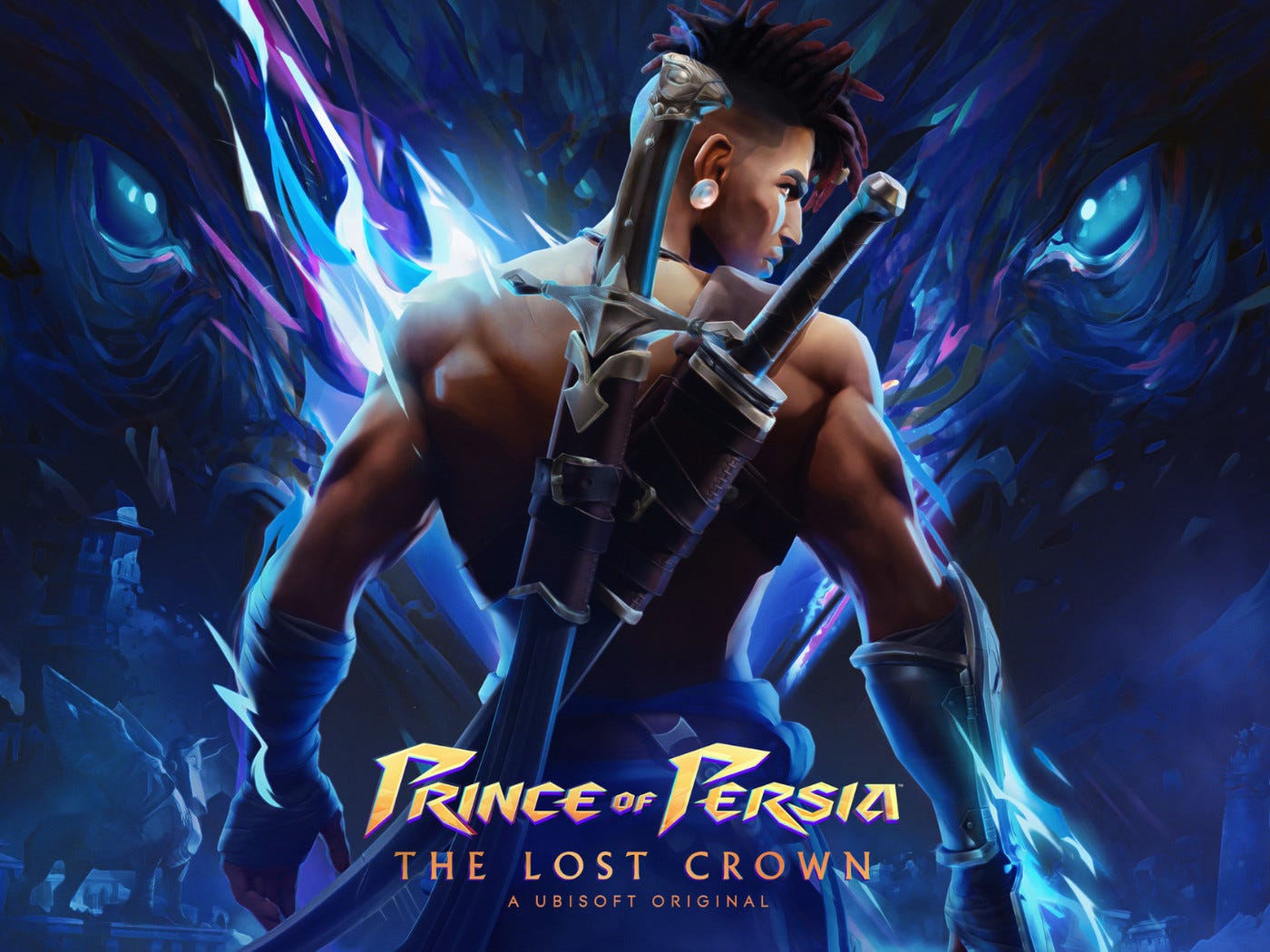
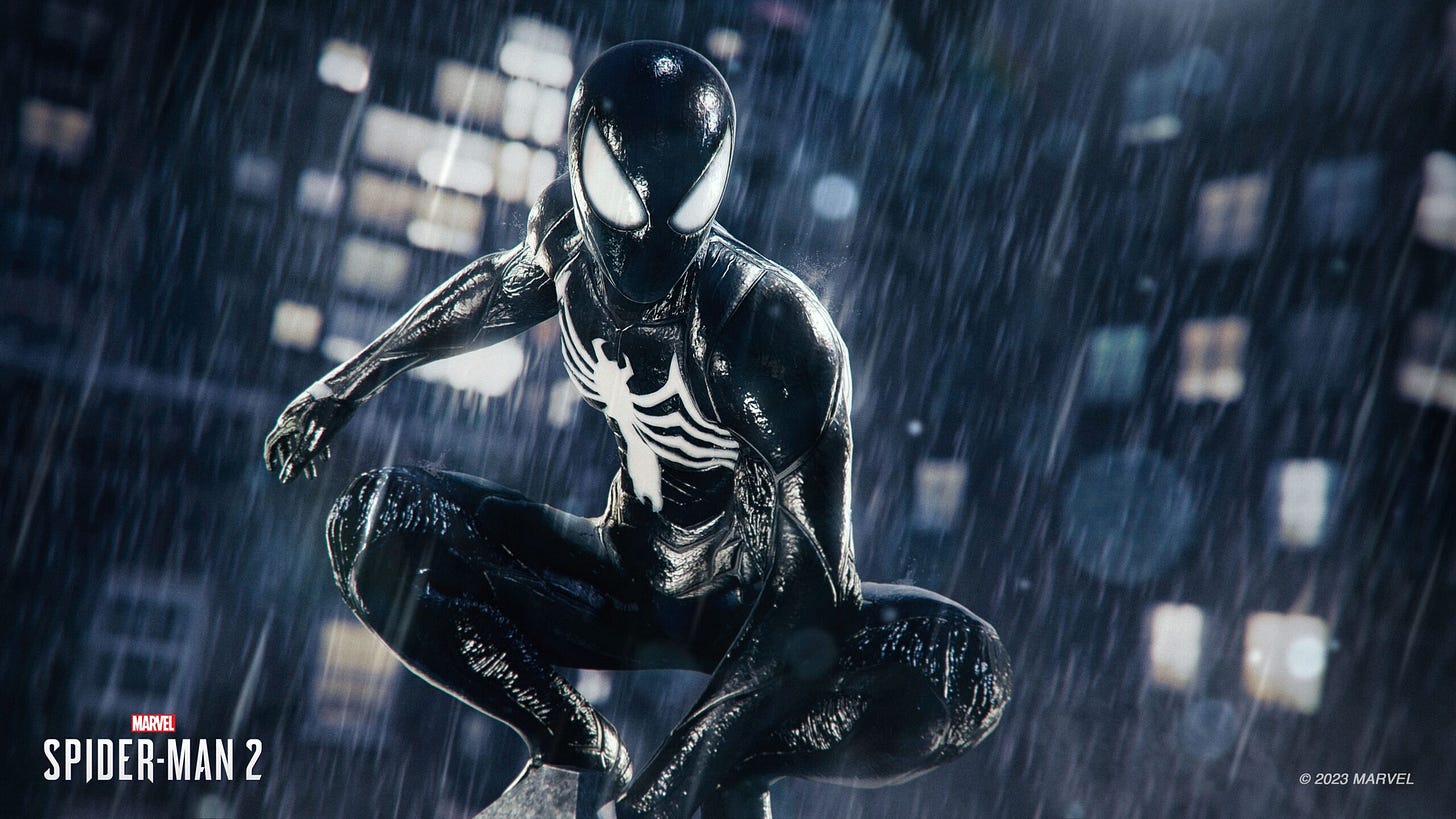
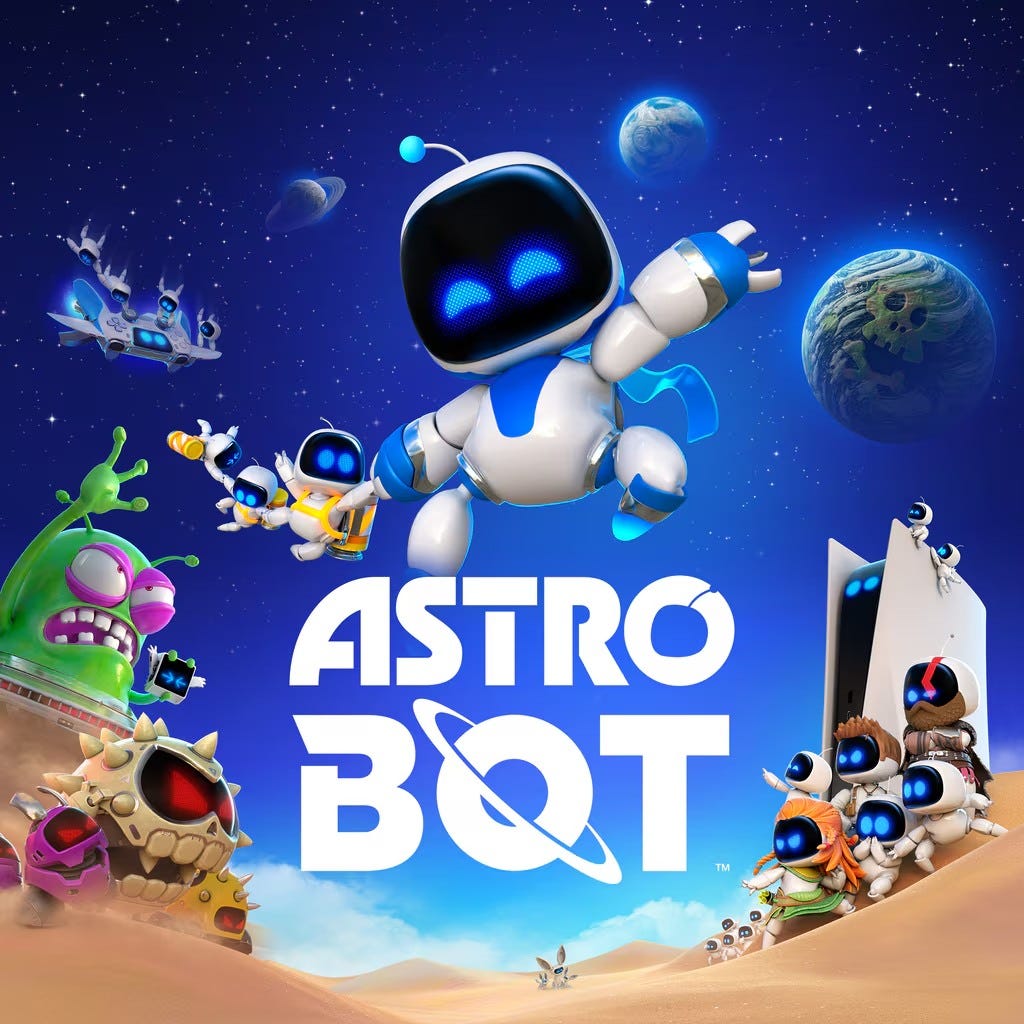

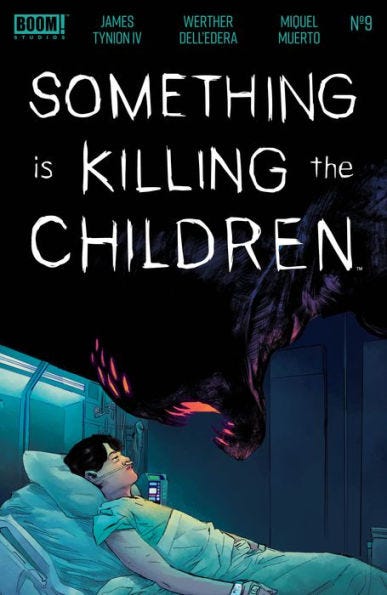


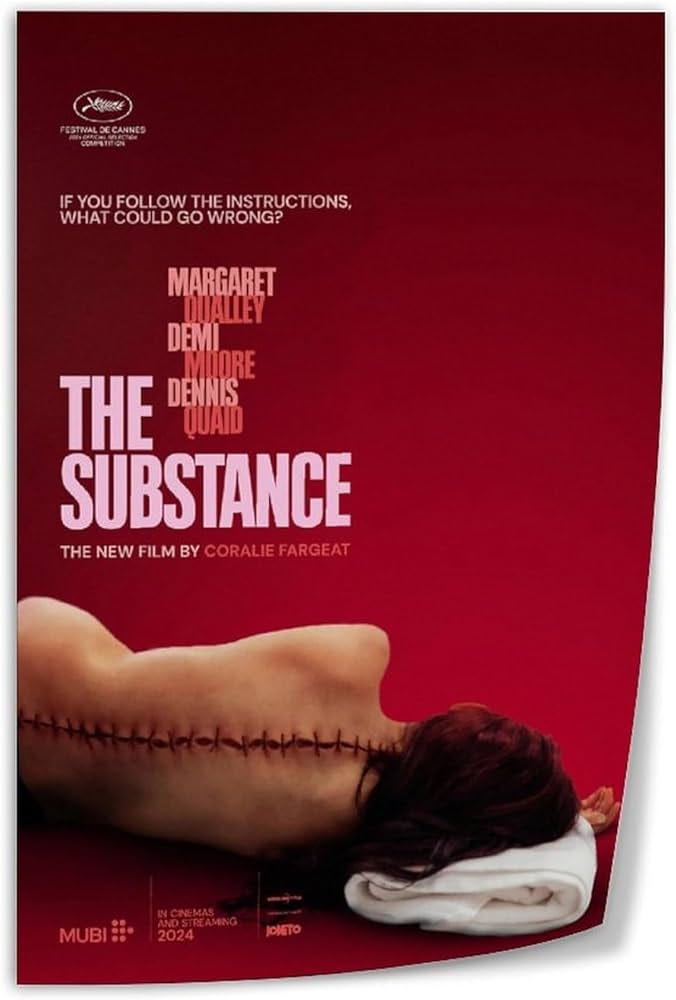
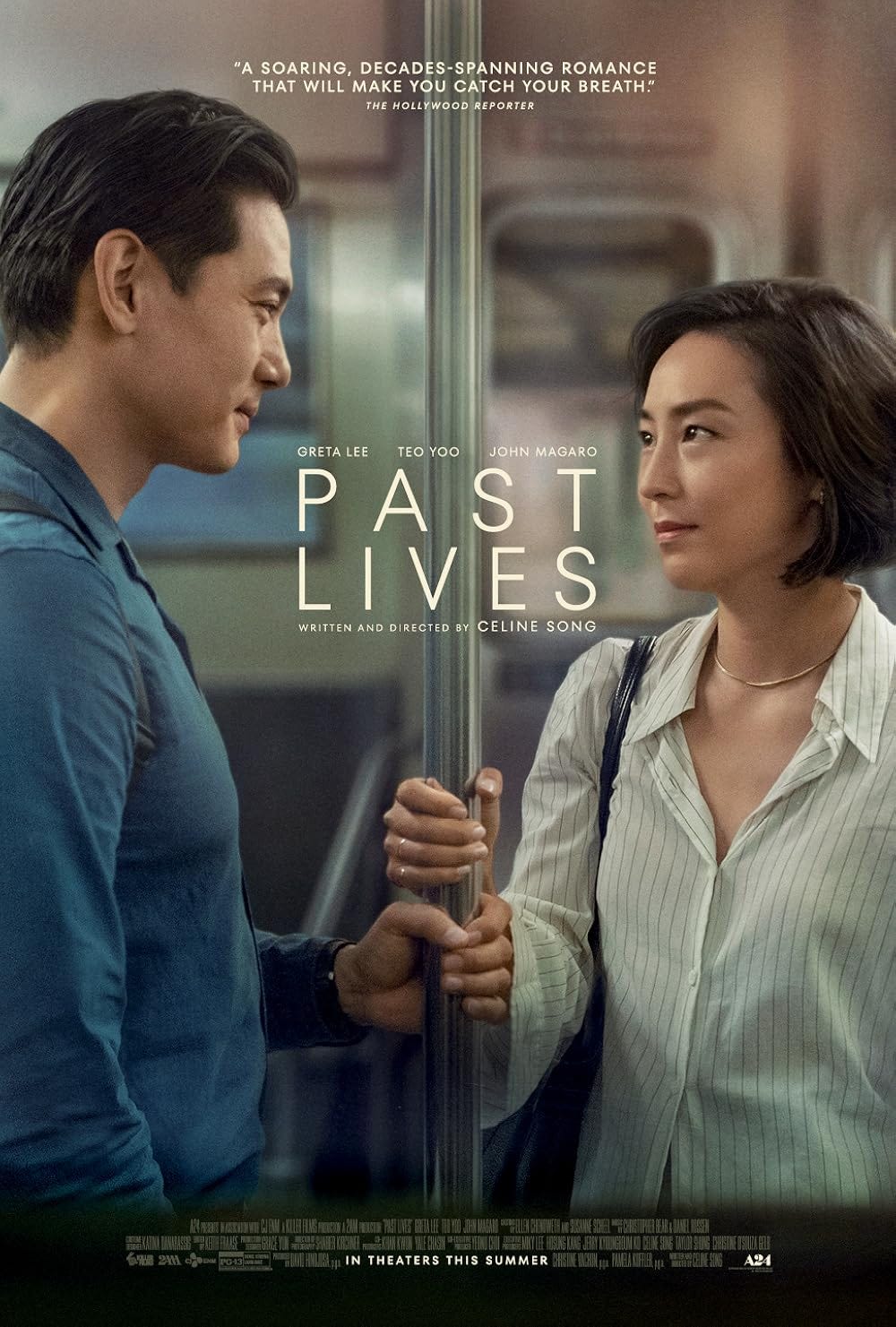


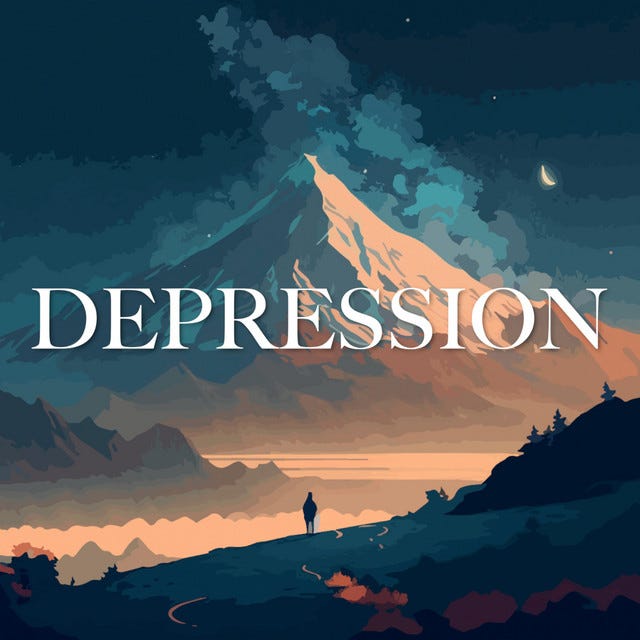
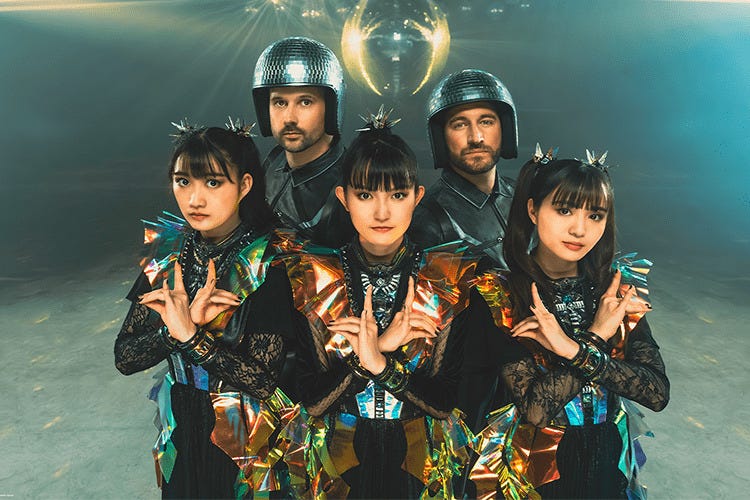



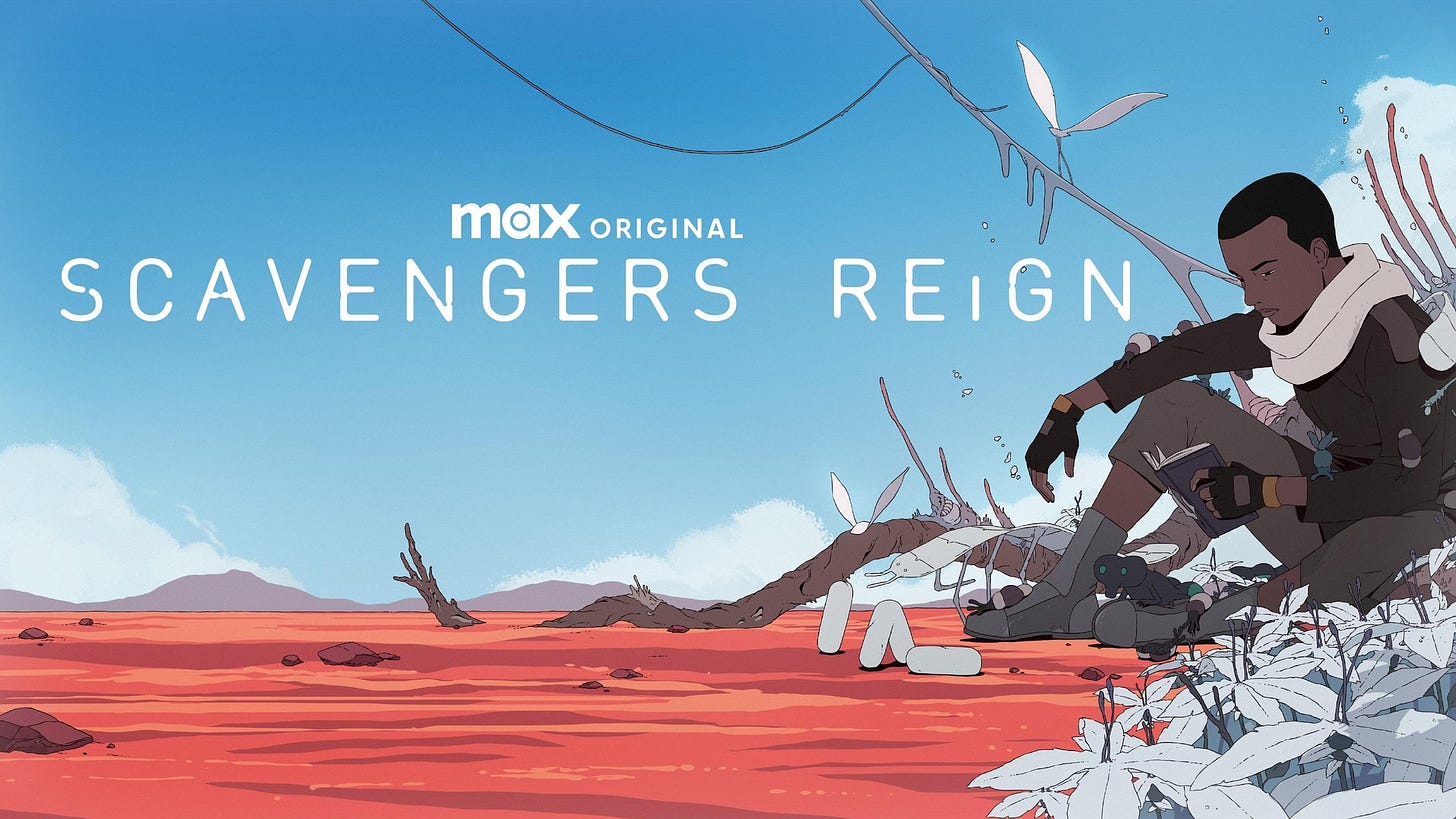
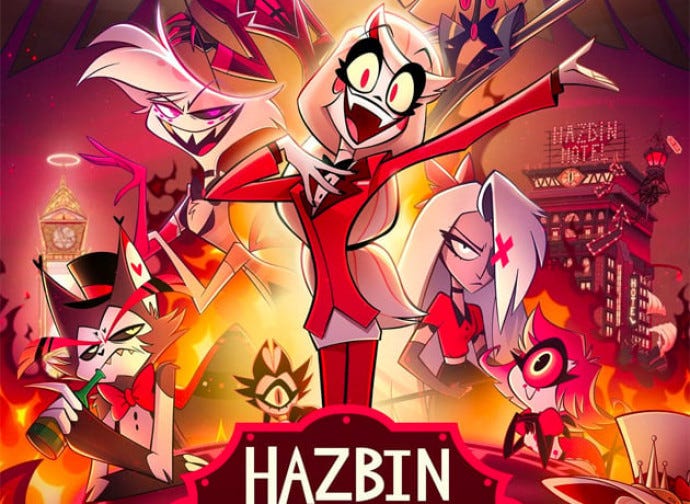
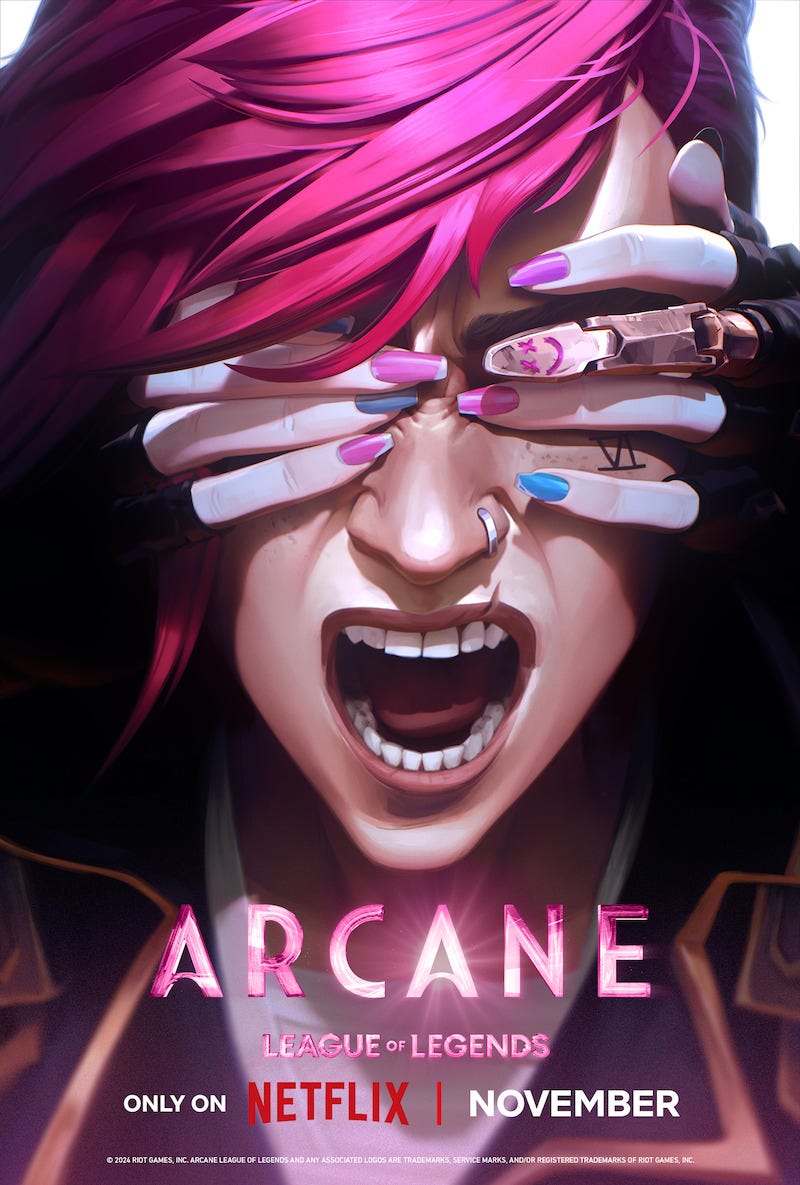
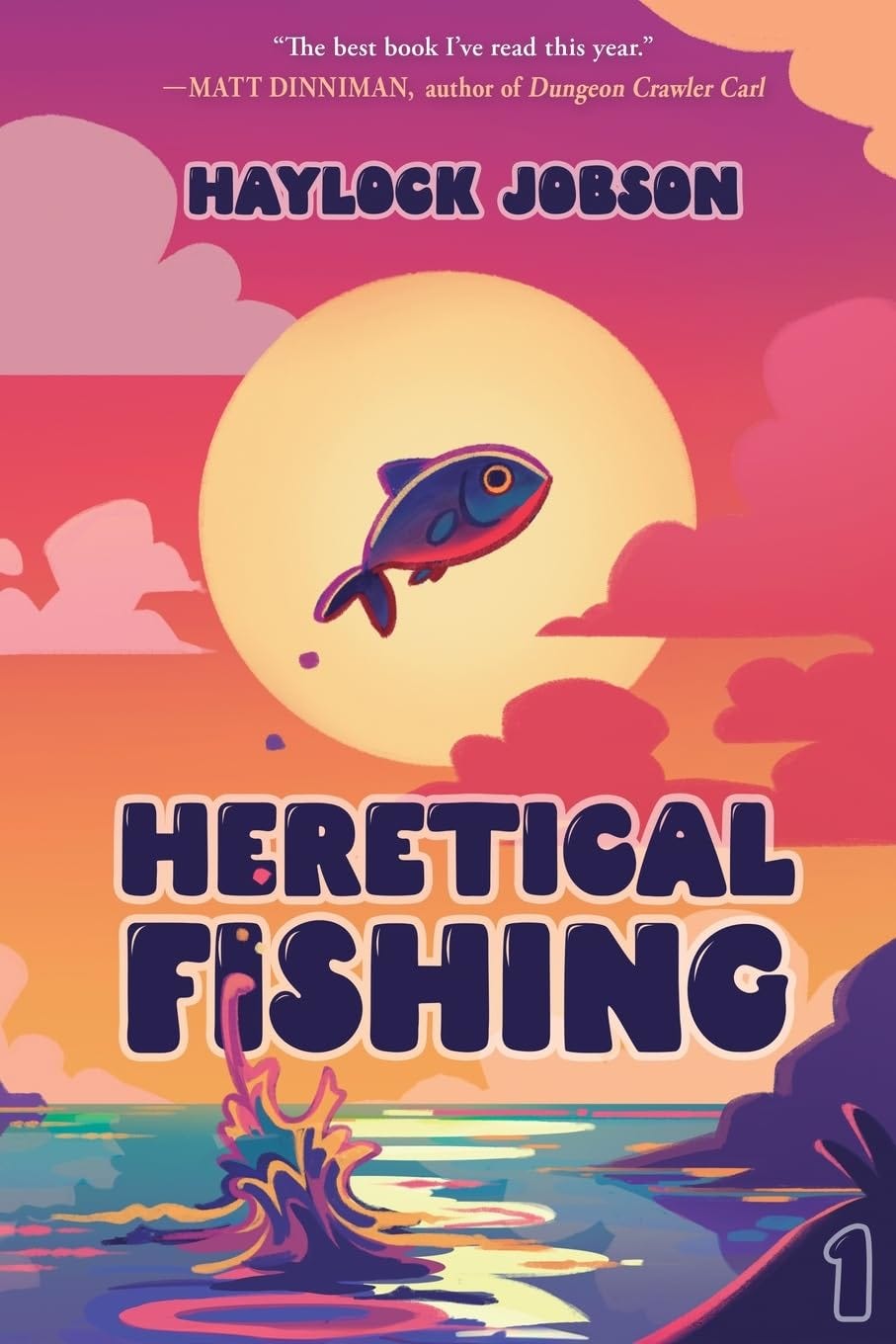
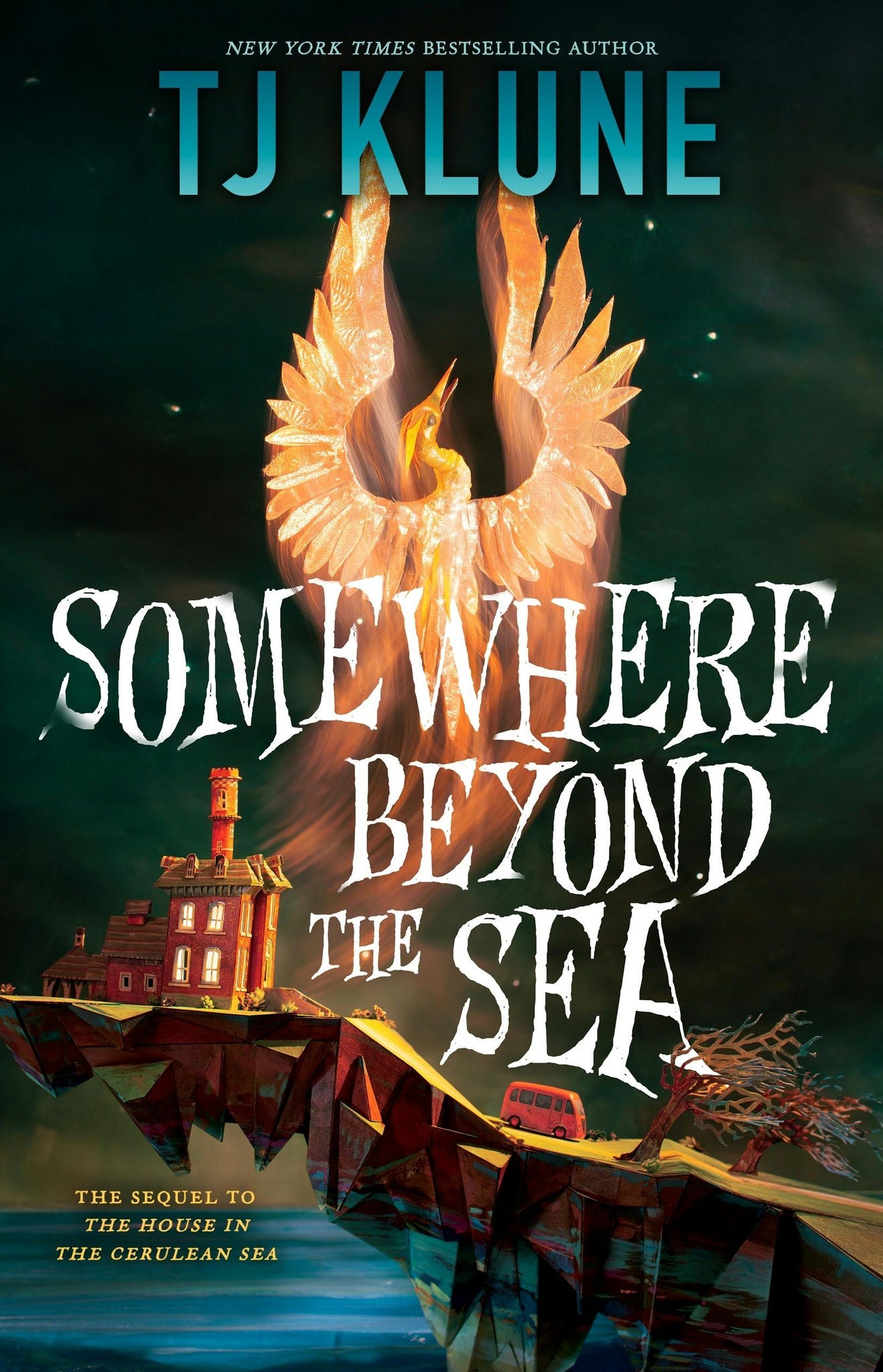
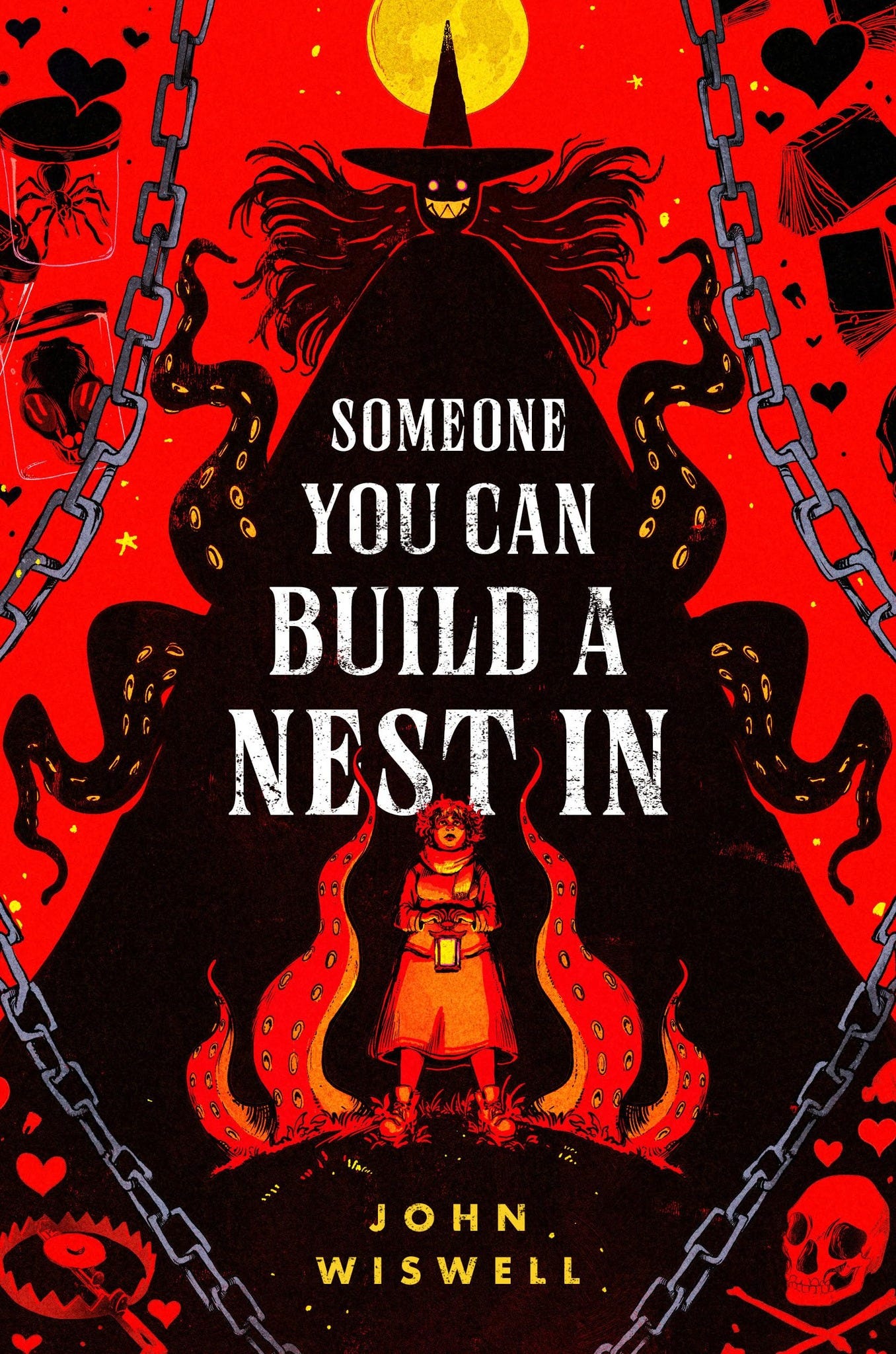


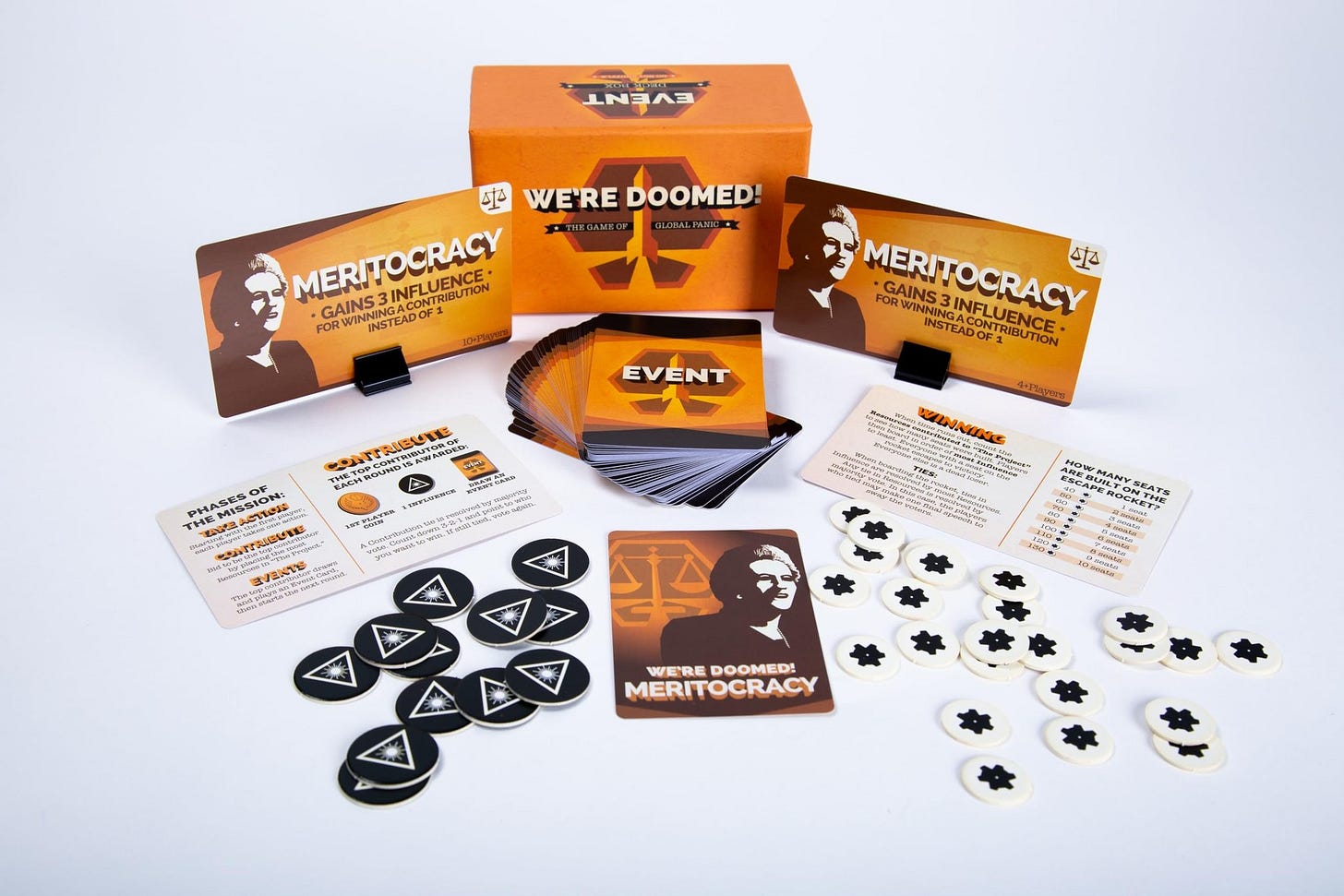
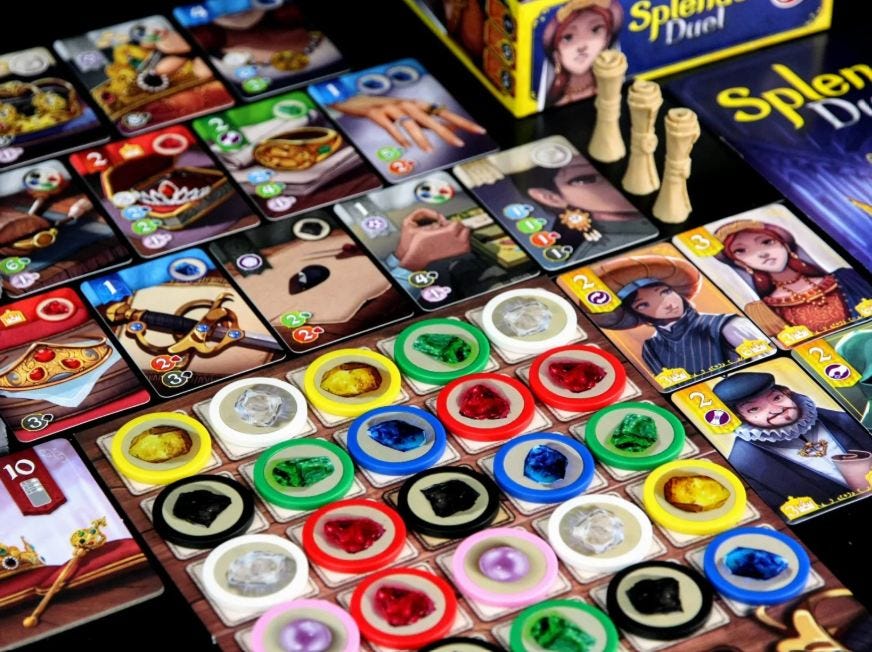

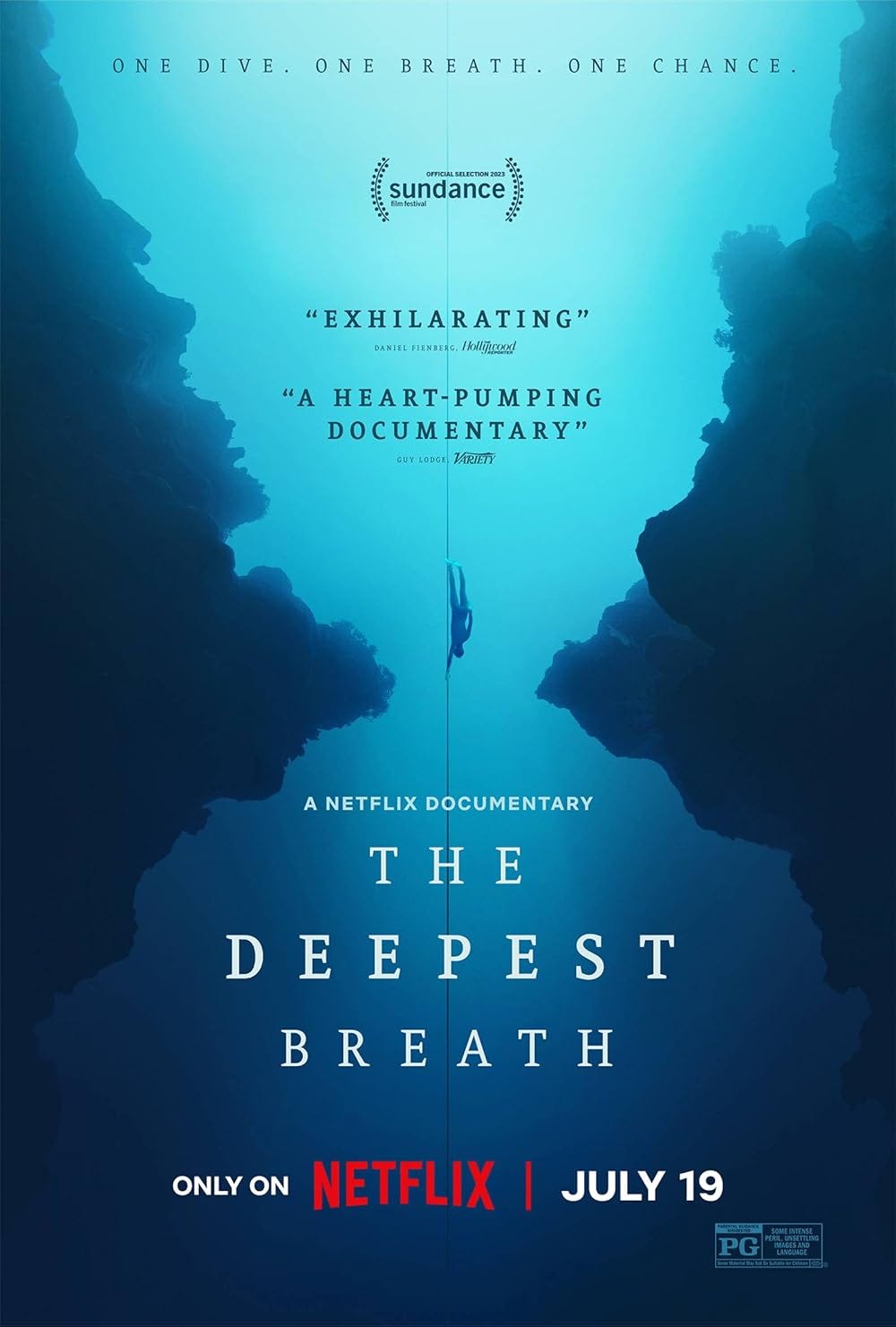

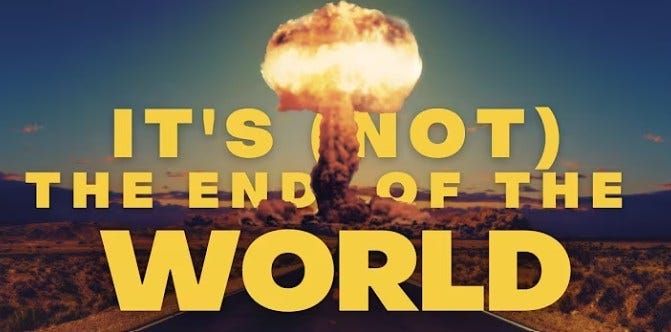
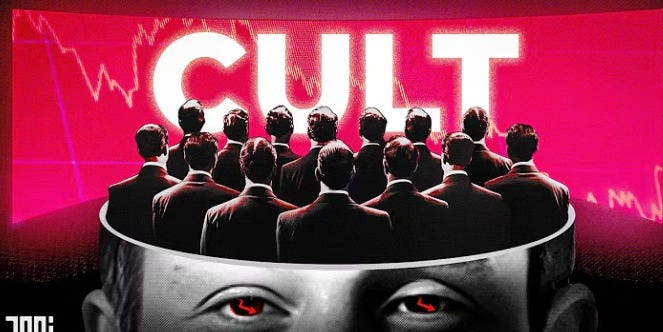
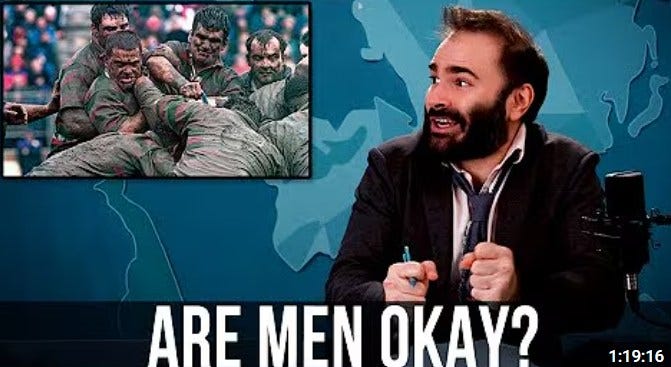
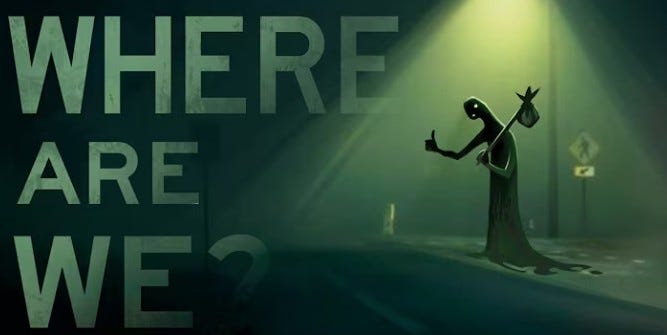


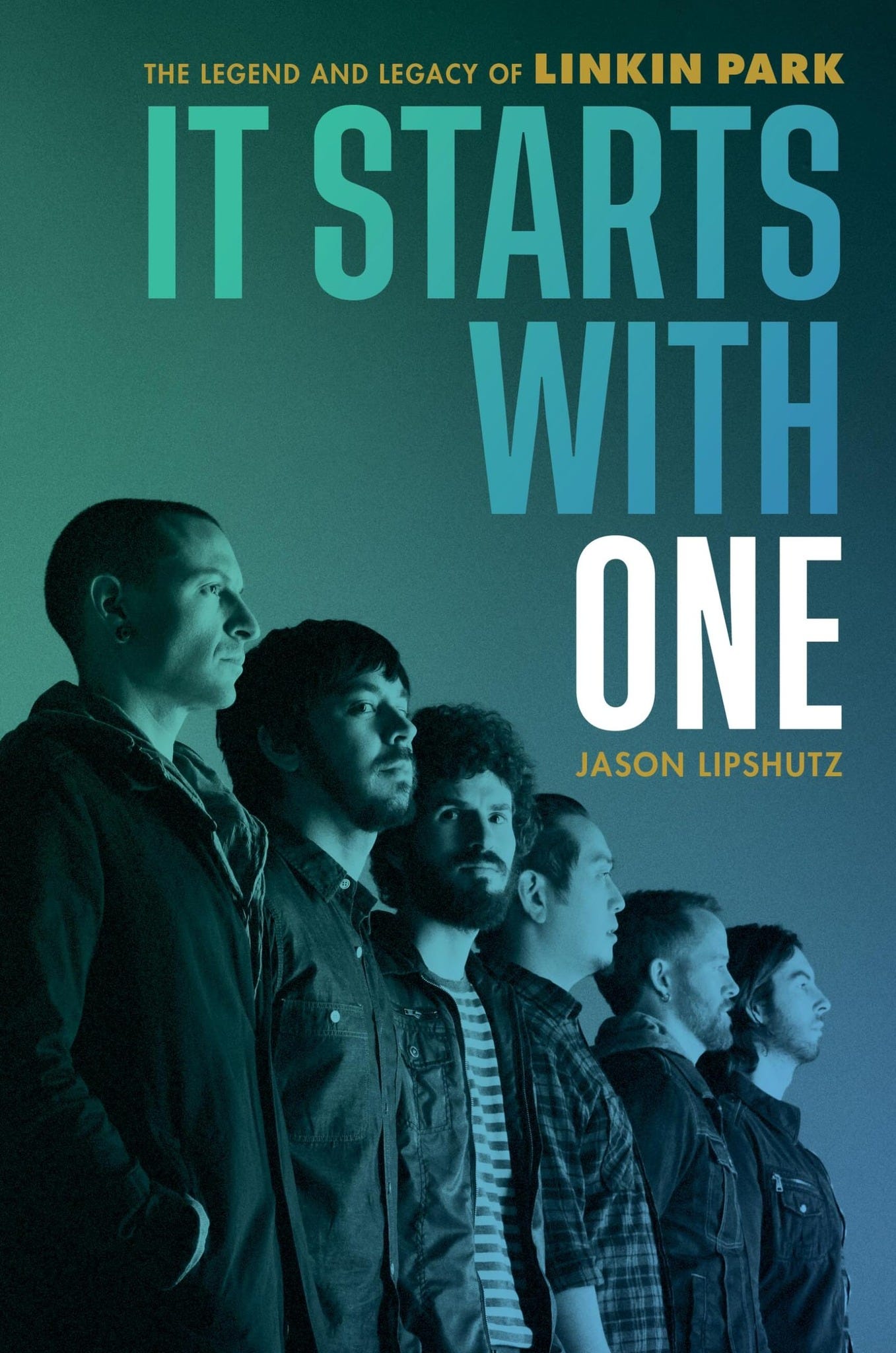
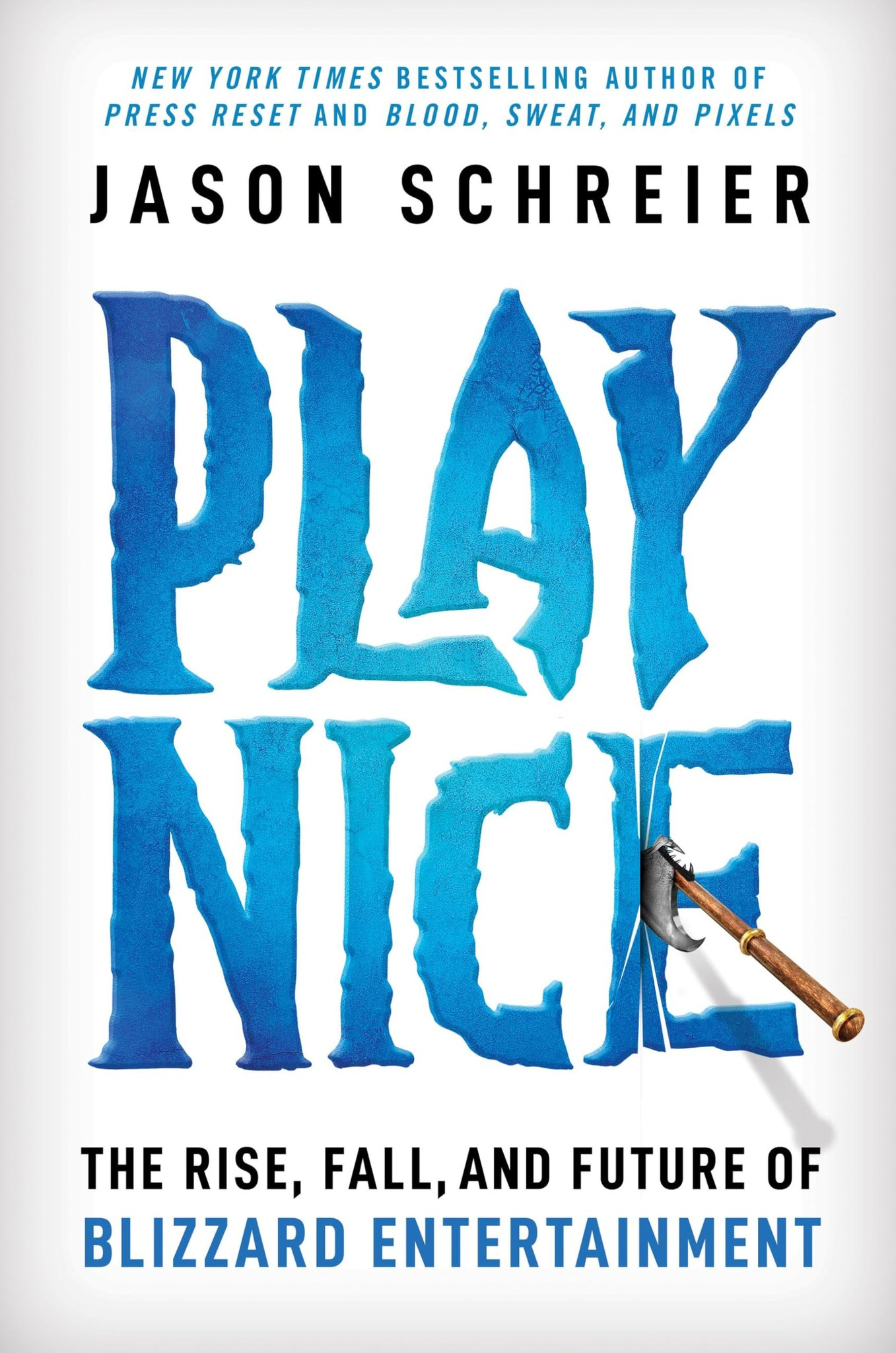
Plenty to devour here. Hades II is on my list but I should probably see to the end of the first one soon ...
Very much enjoyed this. Much new (to me) culture to try.